Last updated on February 13, 2024

Mishra, Claimed by Gix | Illustration by Chris Rahn
The Brothers’ War is one of my favorite recent Magic sets. It was a favorite Limited format of mine thanks to the presence of unearth and prototype. Prototype especially strikes me as an interesting and fun mechanic.
More than that, I loved delving deep into the lore with our flashback set. The Brothers’ War novelization by Jeff Grub is an excellent fantasy novel and inspired my love of Vorthos. Today’s Commander deck guide digs into one of the most iconic characters in Magic’s history: Urza’s brother, Mishra, Claimed by Gix.
The Deck
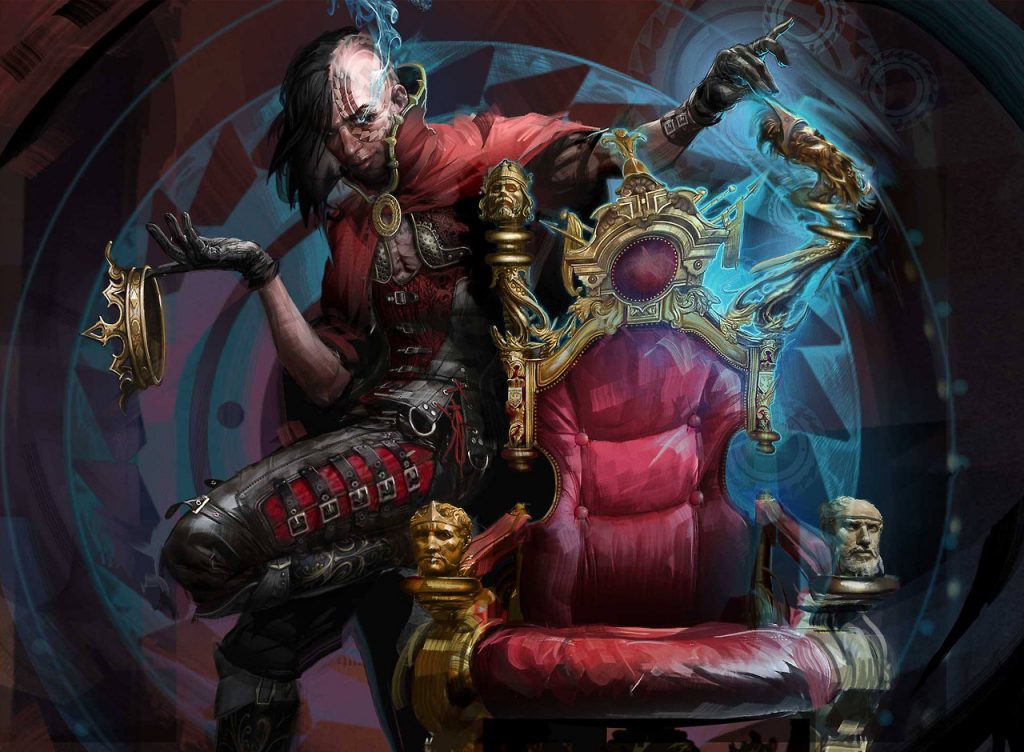
Dark Confidant | Illustration by Scott M. Fischer
Commander (1)
Planeswalker (1)
Creatures (34)
Ardoz, Cobbler of War
Blood Artist
Dark Confidant
Dauthi Voidwalker
Flametongue Yearling
Goblin Engineer
Jadar, Ghoulcaller of Nephalia
Loyal Apprentice
Orcish Bowmasters
Sardian Avenger
Tilonalli's Summoner
Combat Celebrant
Dalek Squadron
Drana, Liberator of Malakir
Gix, Yawgmoth Praetor
Goblin Rabblemaster
Hanweir Garrison
Imperial Recruiter
Lagomos, Hand of Hatred
Legion Warboss
Phyrexian Dragon Engine
Professional Face-Breaker
Bloodletter of Aclazotz
Kardur, Doomscourge
Purphoros, God of the Forge
Rankle, Master of Pranks
Roaming Throne
Fury
Karlach, Fury of Avernus
Kiki-Jiki, Mirror Breaker
Rankle and Torbran
Ancient Copper Dragon
Bloodthirster
The Master, Multiplied
Instants (8)
Cut Down
Entomb
Lightning Bolt
Malakir Rebirth
Vampiric Tutor
Terminate
Fire Covenant
Valakut Awakening
Sorceries (10)
Song of Totentanz
Tempt with Vengeance
Vandalblast
Demonic Tutor
Diabolic Intent
Dreadbore
Night's Whisper
Shatterskull Smashing
Sign in Blood
Agadeem's Awakening
Enchantments (3)
Curse of Opulence
Aggravated Assault
Court of Embereth
Artifacts (8)
Mishra's Research Desk
Skullclamp
Sol Ring
Arcane Signet
Talisman of Indulgence
The Reaver Cleaver
Urabrask's Forge
Helm of the Host
Lands (34)
Blightstep Pathway
Blood Crypt
Bloodstained Mire
Command Tower
Den of the Bugbear
Dragonskull Summit
Hall of the Bandit Lord
Hanweir Battlements
Haunted Ridge
Luxury Suite
Mountain x10
Prismatic Vista
Shinka, the Bloodsoaked Keep
Shizo, Death's Storehouse
Smoldering Marsh
Sokenzan, Crucible of Defiance
Sulfurous Springs
Swamp x6
Takenuma, Abandoned Mire
Urborg, Tomb of Yawgmoth
This deck is an aggressive tokens strategy that wants to go wide and fast to bring your opponents to their knees. This deck focuses on putting as many rectangles into play as it can to support Mishra, Claimed by Gix‘s attack trigger.
Tokens are an area red and black dabble with. Many red token generators make a lot of tokens and sacrifice them at the end step, leaving you room to play some cards like Blood Artist and Skullclamp to take advantage of temporary token production.
Aggro decks can struggle in Commander since the multiplayer format and emphasis on going big are hard for aggressive decks with small creatures to navigate. This deck employs several infinite combos to help get across the finish line. It’s a deck that’s appropriate to play at mid-powered tables. You have a few too many combos to consider this a casual deck but lack fast mana and other commodities of high-powered EDH decks.
The Commander
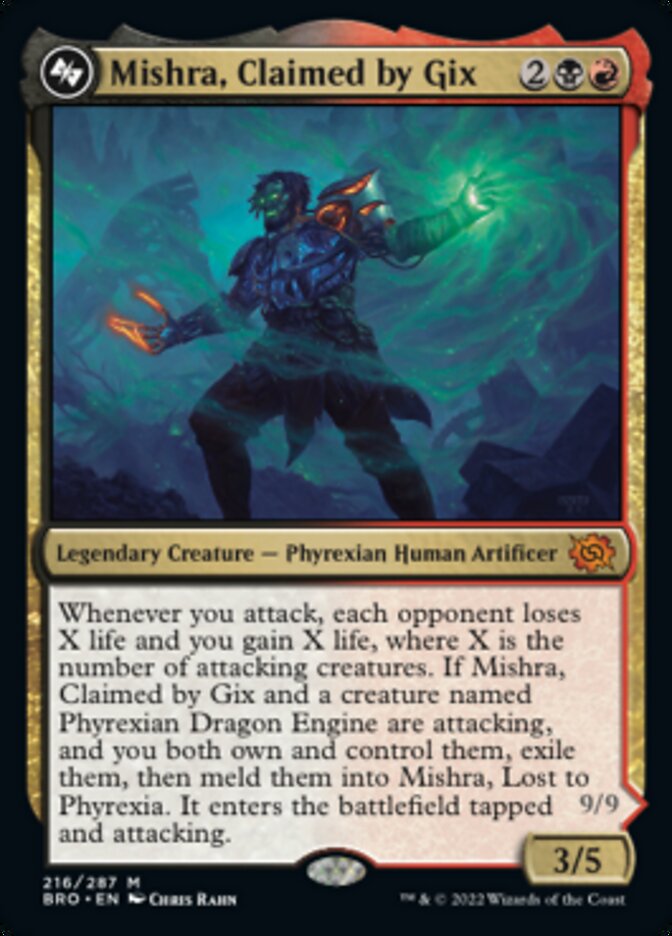
Mishra, Claimed by Gix is the guiding focus of this deck. You’re going wide to wring the most damage possible from Mishra’s attack trigger. Getting to hit all your opponents at once is essential to help deal the massive amount of damage you need to win. The lifegain isn’t anything to sneeze at, either; it lets you attack freely without worrying about dying on the crackback.
In addition to all these ways to go wide, this deck seeks to exploit Mishra’s attack triggers by getting multiple combats. This works with your commander and other creatures with powerful attack triggers.
As practically required, there’s the Phyrexian Dragon Engine necessary to meld your commander into Mishra, Lost to Phyrexia and a handful of tutors to set that up. It’s not the primary game plan, but the monstrous second half of your commander is a fantastic way to close out a game. I’m partial to either making all your opponents discard a bunch of cards or unleashing a mini-board wipe that lets your other forces through. The Powerstone option is notably weak as this deck can’t leverage them.
Extra Combat Enablers
These cards aren’t quite as good as extra-turn spells, but they’re very close since the big thing you get from an extra turn is another attack. You have cards that trigger on attack or at the beginning of combat, but many of these cards are also integral to your infinite combos.

Combat Celebrant is fragile, but it’s your cheapest way to take an extra combat. It’s also a central combo piece.
Bloodthirster and Karlach, Fury of Avernus provide you with far more expensive extra combats. Karlach’s first strike is essential to help your creatures get in for multiple combat steps, while Bloodthirster can win games single-handedly by giving you four total combat steps.
Aggravated Assault offers you a powerful mana sink if you start flooding. It’s basically a repeatable Time Warp if you squint at it, and it does wonders with Ancient Copper Dragon.
Token Producers
These cards are this deck’s bread and butter. They’re the spells that swell your ranks so Mishra can drain your opponents for 6 or more life each time you attack. Many produce tokens temporarily, but some allow you to keep all the cards you make.
Song of Totentanz and Tempt with Vengeance are two of your most effective finishers. These drop tons of power onto the board and give Mishra’s trigger a huge burst, usually from nowhere, and they scale with the game.
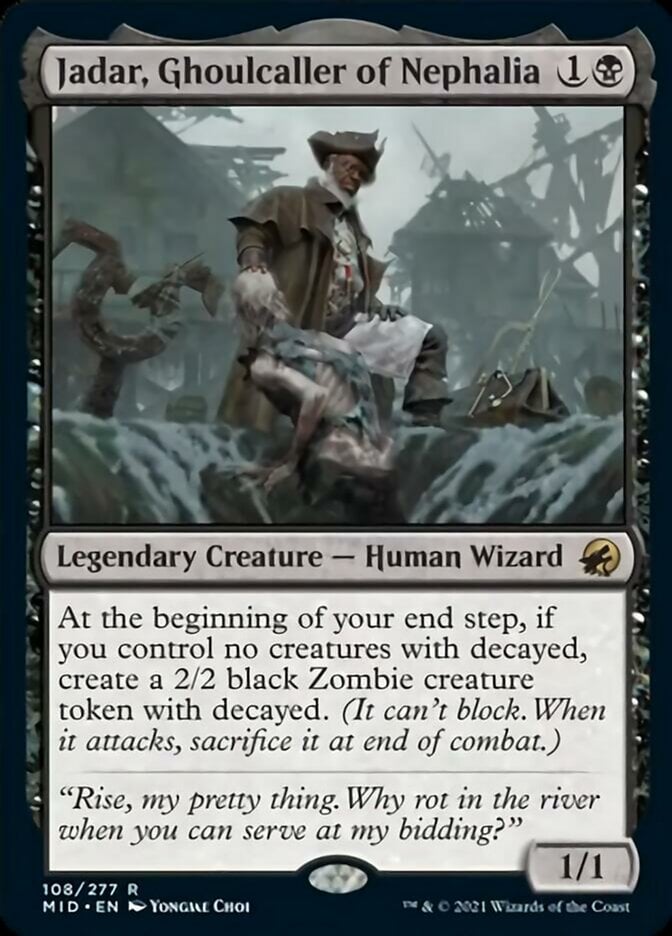
Jadar, Ghoulcaller of Nephalia has quickly become a personal staple in any black deck that wants tokens, to attack, or sacrifice cards. It applies a lot of early pressure, and the decayed Zombie can attack into anything since it dies anyway.
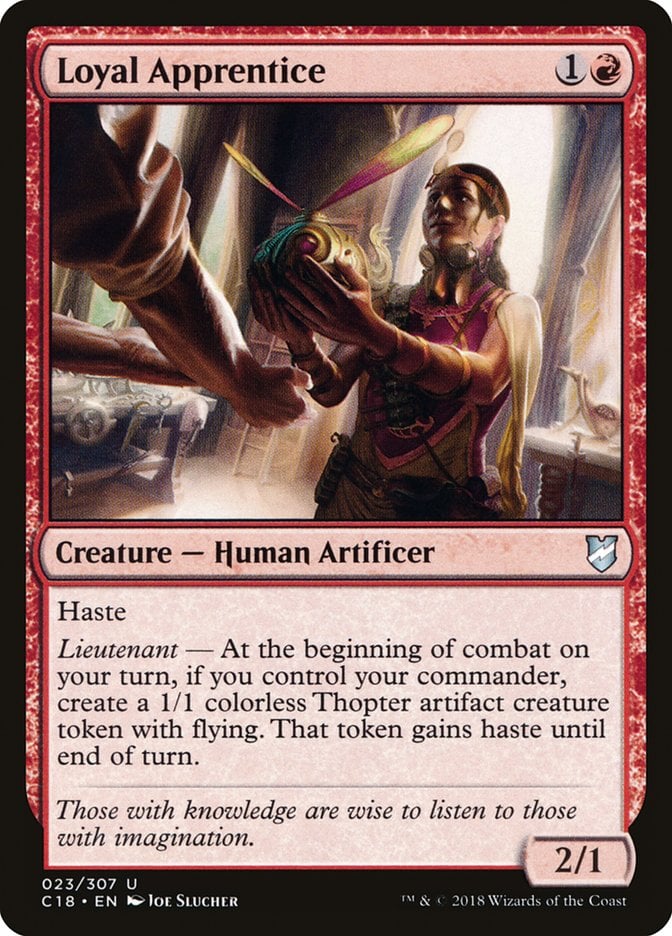
Any aggressive red deck should consider Loyal Apprentice. It fleshes out your board incredibly well and can often get in for damage on the ground while your opponents spend their early turns casting Talismans and Cultivate.
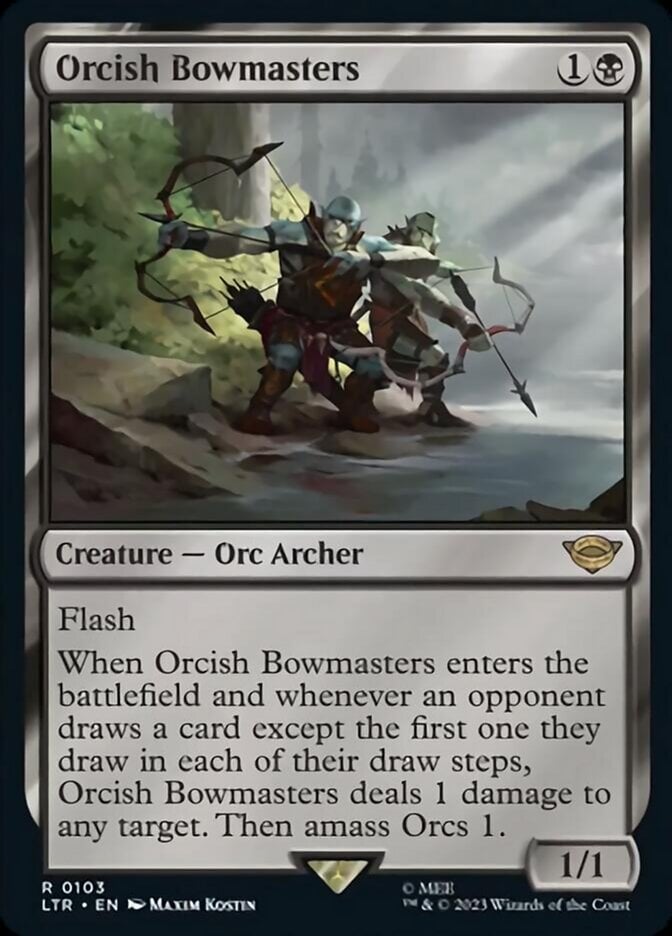
Boiling Orcish Bowmasters down to a simple black token producer sells one of the strongest cards printed in recent memory short, but the fact that it produces two bodies on top of all the other power makes it a staple that works well with your commander.

Tilonalli's Summoner is essentially a slower version of Song and Tempt that fills your board swiftly. It dies in combat often, but one trigger can be enough since you ascend easily. It takes over games where your opponents don’t respect it with removal or blockers.
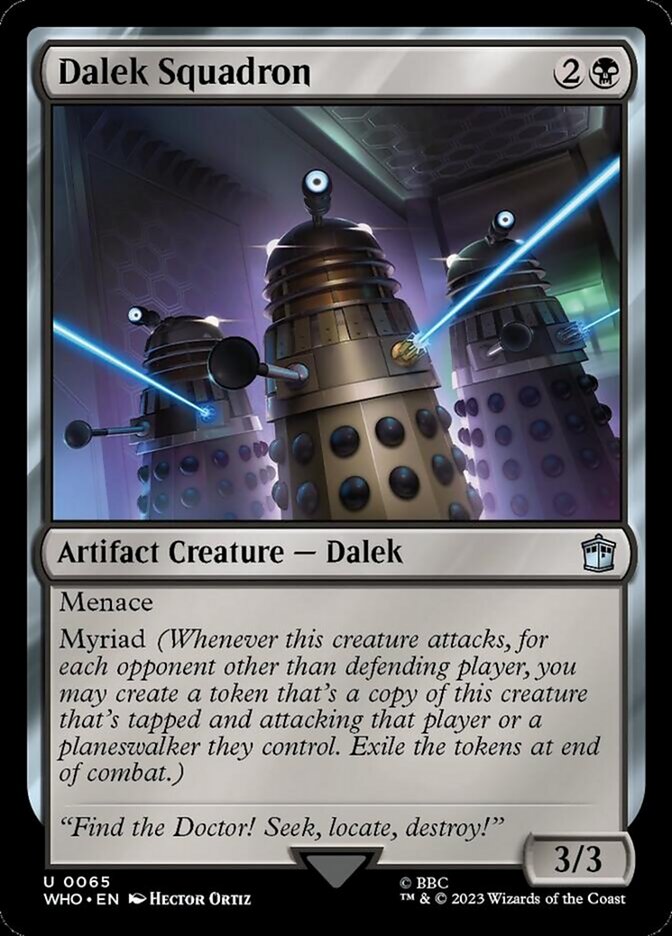
Dalek Squadron just gets in. It’s one card that produces three attackers regularly for Mishra’s trigger. It’s not flashy, but it’s an effective creature for a deck that wants to attack with multiple bodies.
Goblin Rabblemaster and Legion Warboss offer a steady stream of tokens simply for existing. Warboss’s mentor ability helps bulk up your dorky tokens, while the Rabblemaster is effective at assassinating planeswalkers or players low on life.

Hanweir Garrison produces a lot of tokens for a 3-drop that sticks around, and melding it wins some games through sheer pressure.
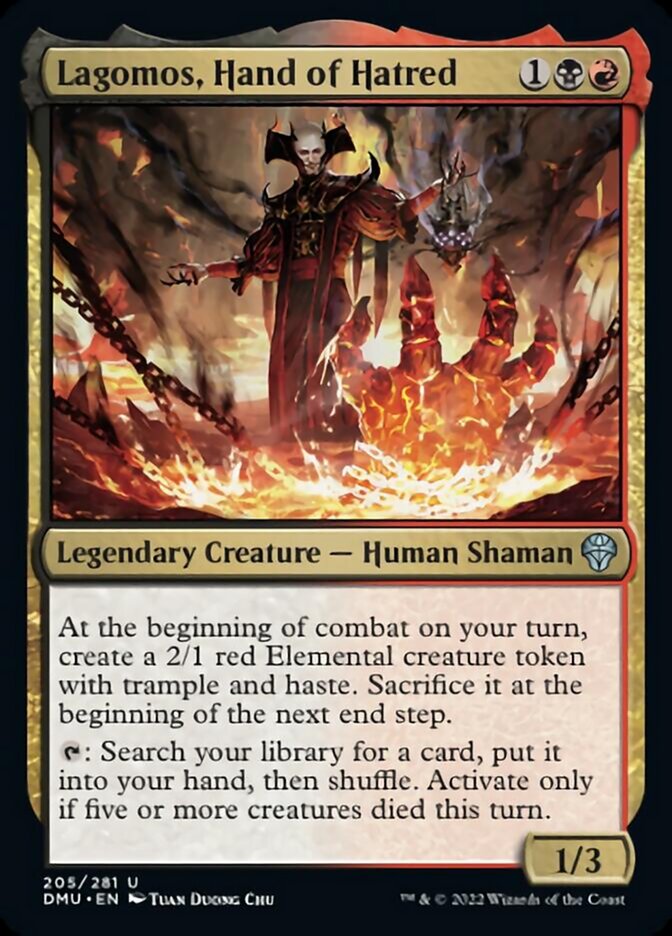
While Lagomos, Hand of Hatred is primarily here to produce attackers each turn, and triggering the tutor ability is ridiculously easy. Plenty of other token producers sacrifice their tokens EOT and chucking a 1/1 or two at your opponents often results in chump attacking.

Urabrask's Forge scales poorly with the game, but it’s a beating when cast early enough. The snowballing token presents at least a Mishra trigger, but it eventually becomes large enough your opponents can’t ignore it.
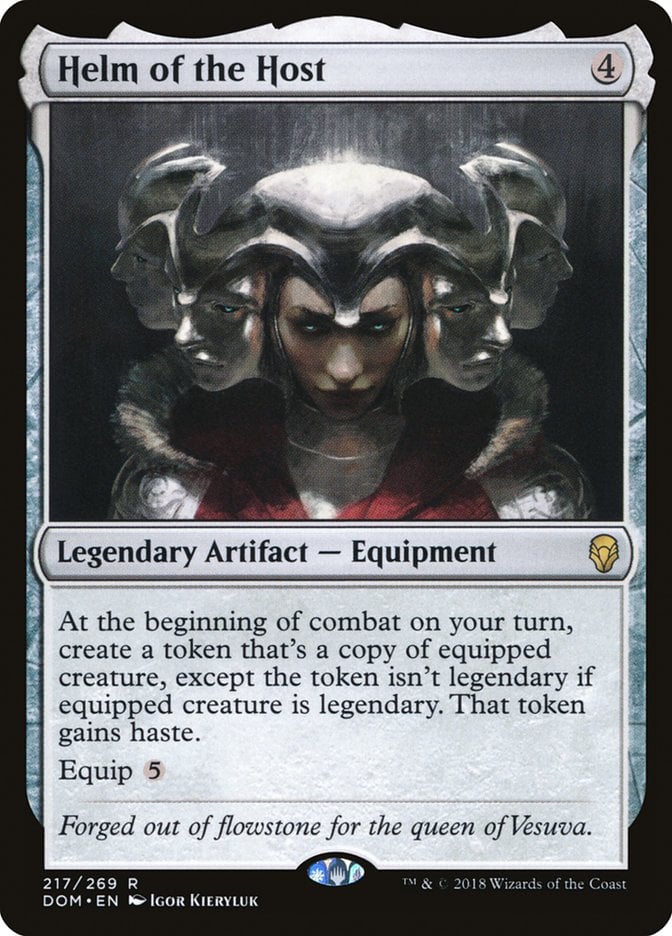
You have tons of valuable creatures to clone with Helm of the Host, from ways to generate simple value to creatures that win the game with this as a combo piece. This equipment one of your most versatile threats.
The Master, Multiplied is a bit slow but makes up for it by winning. If you get one attack in, this Doctor Who card dominates the game. Getting to keep the tokens created by effects like Chandra, Acolyte of Flame, and Urabrask's Forge is also a pretty sweet value.
Aggressive Cards
These cards work well in aggressive decks. They help close the door by enabling your attacks or rewarding your aggression.
Ardoz, Cobbler of War and Purphoros, God of the Forge work especially well with your token producers. These are like backups to your commander that extend the range of cards like Song of Totentanz as finishers that accrue more value the longer, they’re on the field.
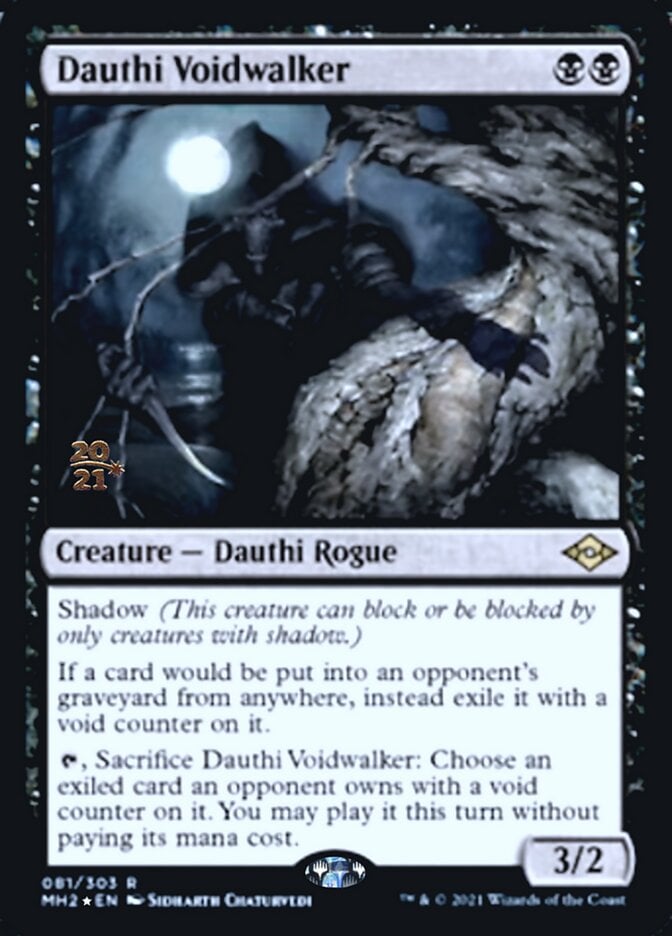
On top of being an effective stax piece, Dauthi Voidwalker‘s shadow makes it practically unblockable. Some decks can’t function until they remove this, which slows them down and means they’re using interaction on a 2-drop instead of Mishra or The Master.
Sardian Avenger always gets to attack since most players have a few artifacts lying around, and first strike is a great blocker deterrent. It also punishes players throwing Treasure around, which is an effect that’s always welcome.
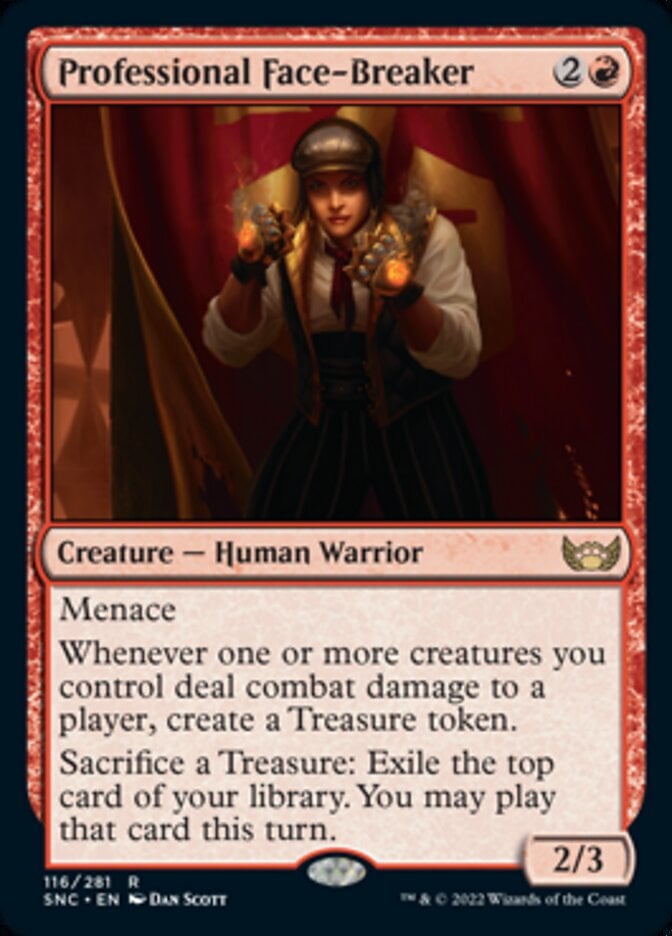
Creatures that give you card advantage or ramp for attacking would be a slam-dunk in this deck. Professional Face-Breaker does both and is a reasonable attacker itself. This stacks incredibly well with your copy effects.

Bloodletter of Aclazotz is crazy strong. This deck gets Mishra, Claimed by Gix, to deal 5 or 6 damage with its trigger. Doubling that is valuable enough without factoring in doubling combat damage.
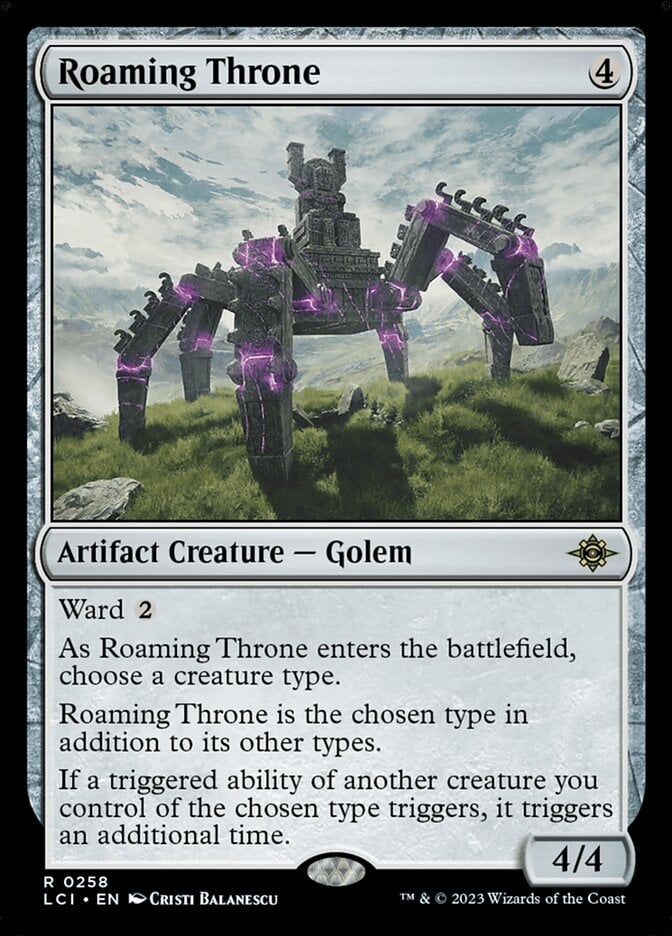
Roaming Throne is far more direct about doubling Mishra’s triggers. It’s generally best to name human unless you’re setting up some spice with The Master, Multiplied or Bloodthirster; other notable humans with triggers you want to double include Professional Face-Breaker, Loyal Apprentice, and Imperial Recruiter.

Doubling damage and triggers is good, but Rankle and Torbran can often be more effective. It doesn’t interact with Mishra’s trigger, but letting your army of 1/1s deal 3 damage does a lot to close games. The edict is quite good since you’ll always have a token to spare while other players might focus on dropping a few impactful creatures.
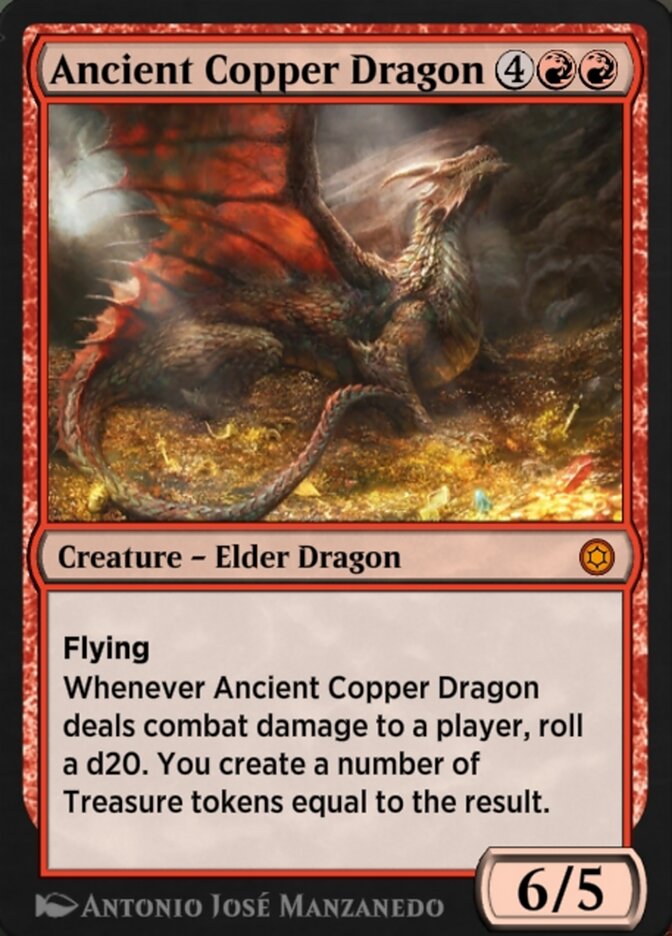
Ancient Copper Dragon grants this deck an excess of riches. You’ll often find yourself with more Treasure than you can spend.
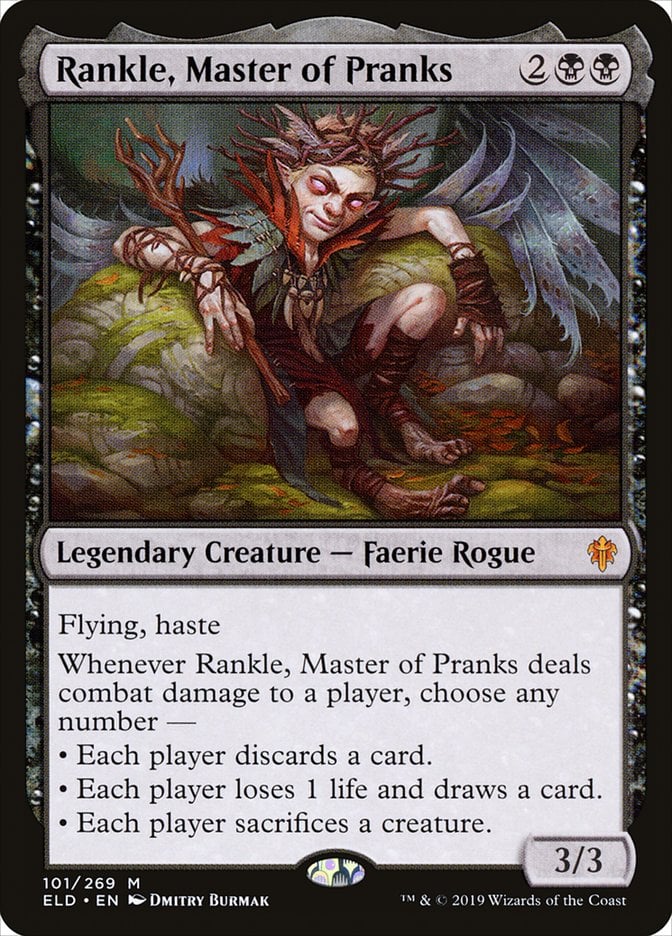
Rankle, Master of Pranks is very effective at getting in and draining your opponents of resources. Since you have so many cheap cards, it’s relatively easy for you to empty your hand and then eat away at your opponents’ resources. It’s good against players who want to hold up counterspells and card draw every turn.
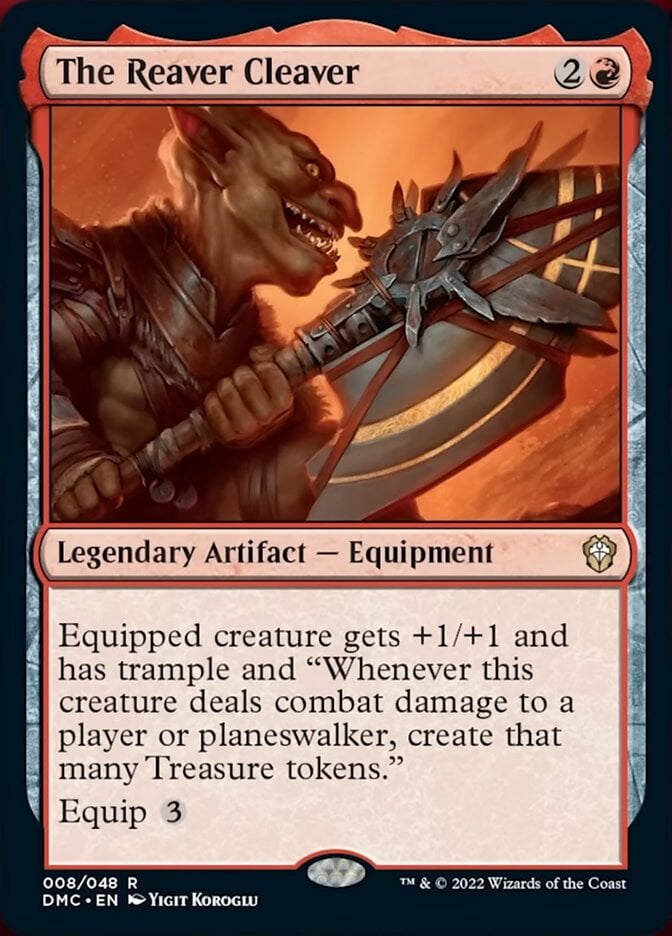
The Reaver Cleaver is mostly here because it’s a ton of fun to say, but it’s also effective. Trample lets you sneak in some damage, and this helps you cast expensive cards well ahead of schedule.
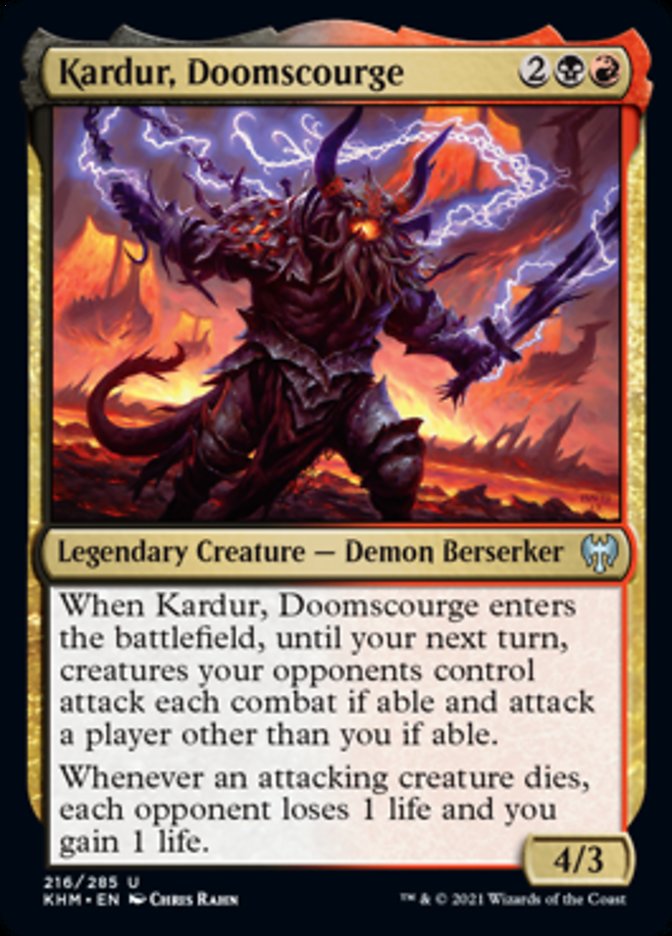
Kardur, Doomscourge does a lot to help this deck. Goading your opponents’ creatures clears away blockers, and the second ability puts your opponents between a rock and a hard place because they take damage even if they block your tokens. Blood Artist offers similar reach while working with Lagomos and other token producers that sacrifice their production at EOT.
Card Advantage
Card advantage is vital for aggressive decks. Dumping your hands only to run out of gas leaves your deck sputtering along, incapable of closing the game and folding to a board wipe. Keeping your hand full is nearly as important as keeping your board full. I’m also including tutors since they let you see fresh cards, even though they often aren’t strictly card advantage.
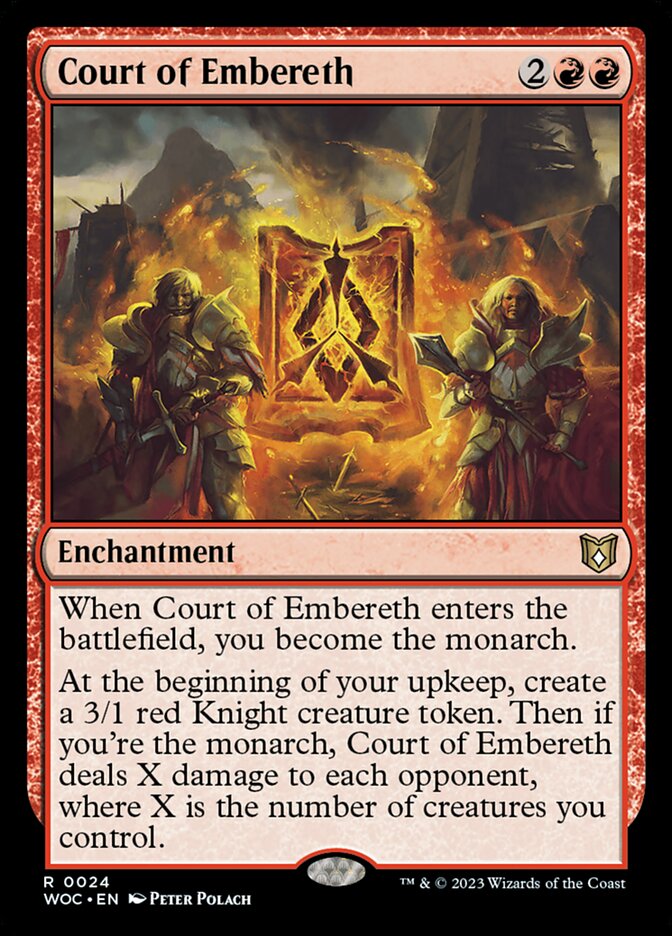
Court of Embereth pulls double duty, keeping your hand and board abundant with resources. Mishra is effective at defending the monarch, especially since it doesn’t always want to attack, but your tokens do a great job as well.
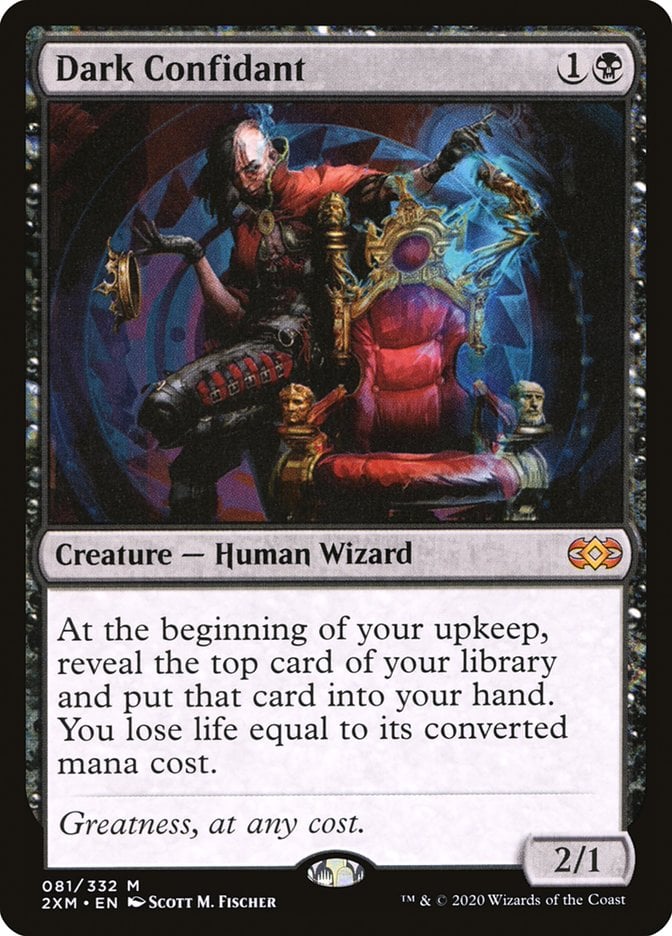
Your curve is low enough to capitalize on Dark Confidant’s fantastic card advantage. Flipping the occasional 6-drop sucks, but you’re often paying a reasonable 2 or 3 life for an extra card.
Night's Whisper and Sign in Blood get in on losing life for cards.

Skullclamp works wonders with all these token producers, especially the temporary ones. It’s one of the most broken cards ever printed, and it’s in full form here.
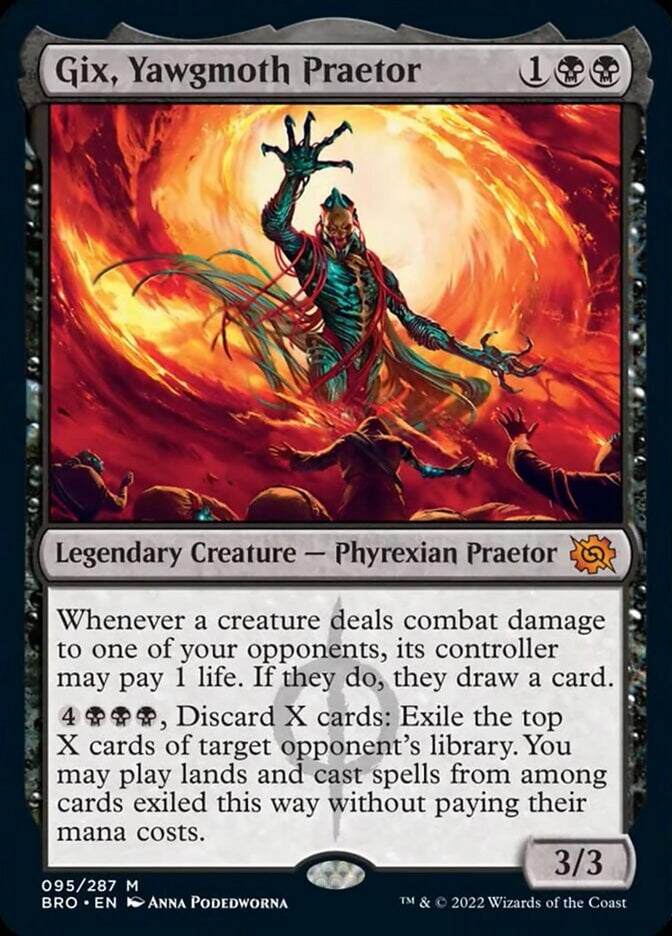
Gix, Yawgmoth Praetor is a flavorful necessity that always works with the deck. You get card advantage, but it also encourages your opponents to deal damage to each other and pay some life themselves.
Demonic Tutor and Vampiric Tutor just find the best card for any given scenario. This could be a key piece of interaction at the right time, a finisher, or the final piece to one of your combos. You have enough excess tokens to make Diabolic Edict work as well.

Imperial Recruiter is a must-have in any deck abusing Kiki-Jiki, Mirror Breaker. Other effective creatures to grab with this are Professional Face-Breaker and Orcish Bowmasters.
Entomb is a second copy of Phyrexian Dragon Engine. You’re using Goblin Engineer for the same purpose, though the Engineer can also find things like Skullclamp or other destroyed artifacts.

Mishra's Research Desk is a flavorful bit of card advantage, but it also gives the above graveyard tutors an additional hit if Phyrexian Dragon Engine is unavailable.
Interaction
Interaction is key for aggressive decks to clear away blockers or ensure you don’t lose to a faster combo deck.
Dreadbore deals with pretty much any creature or planeswalker that ails you. Infernal Grasp and Terminate handle creatures at instant speed.
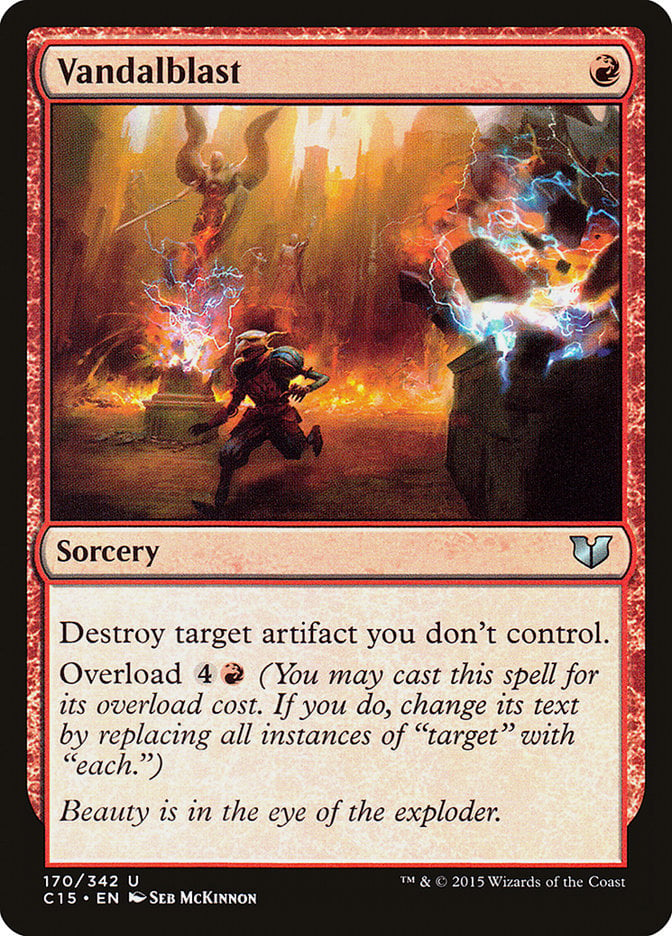
Vandalblast obliterates artifact decks. This is great at punishing opponents who kept a hand of Talismans and virtually no lands but take some players out of the game on the spot.
Fury and Fire Covenant clear multiple blockers at once. The former is great with Kiki-Jiki, while the latter is often a 3-mana Plague Wind, assuming you don’t mind paying a lot of life.
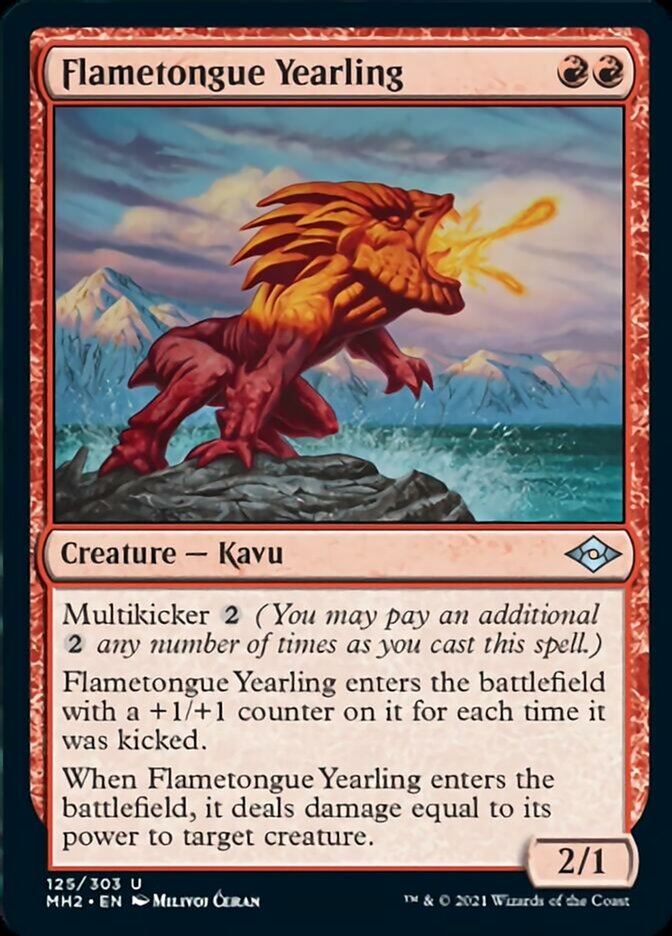
Flametongue Yearling deals with cheap creatures early and clears larger creatures late. Multikicker helps it scale with the game but also makes it quite mana-efficient, giving you something to sink some spare mana into.
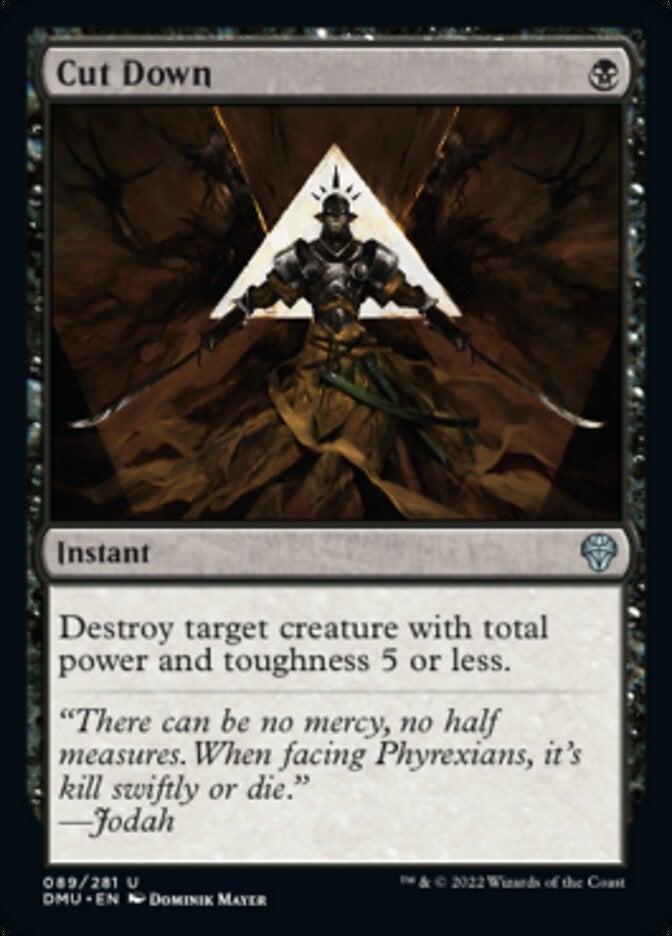
Cut Down is an interesting add. I’m not totally sold on this, but creatures always seem to be getting more efficient, and this clears lots of cheap, early threats like mana dorks, Orcish Bowmasters, and many commanders.
The Mana Base
The mana base is pretty simple. You have a bunch of value lands to make your deck work for you alongside a bit of mana acceleration and great fixing.
Sol Ring, Talisman of Indulgence, and Arcane Signet are the only mana rocks here. It’s not very many, but this deck is often interested in playing creatures early instead of mana accelerants to apply quick pressure.
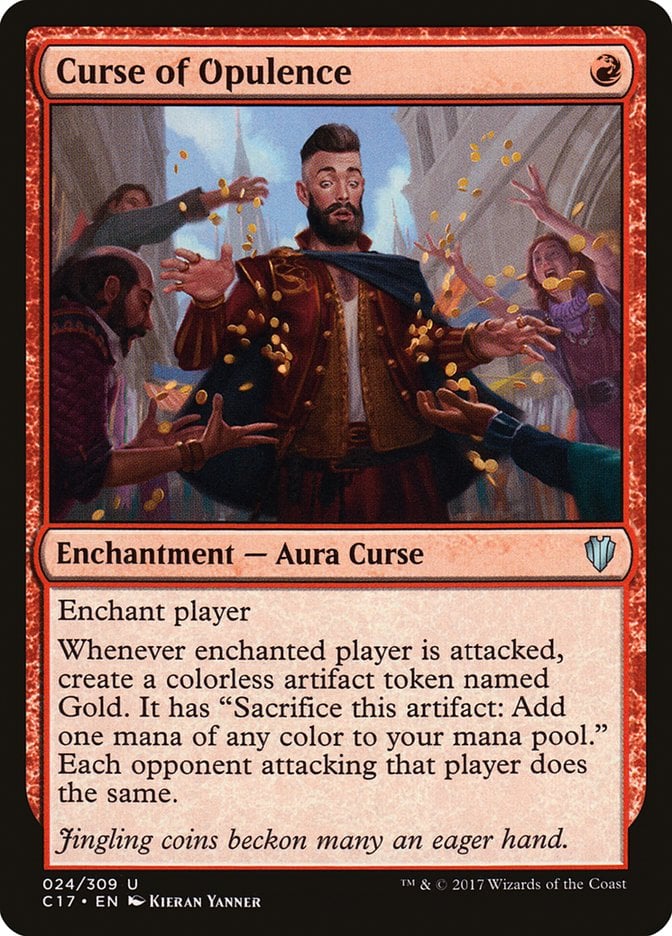
Curse of Opulence is a neat mana accelerant. It’s easy to sequence into a turn and reap benefits. Encouraging your opponents to attack each other helps you push damage and remove some blockers.

Den of the Bugbear provides an aggressive mana sink that triggers Mishra and gives you two bodies for the resulting trigger, making it the most effective creature land for this deck.
Shinka, the Bloodsoaked Keep and Shizo, Death's Storehouse are both primarily here to help you attack but can lead to interesting political plays since they target any legendary creature.
Takenuma, Abandoned Mire and Sokenzan, Crucible of Defiance both provide you with spells instead of basics when drawn later in the game.
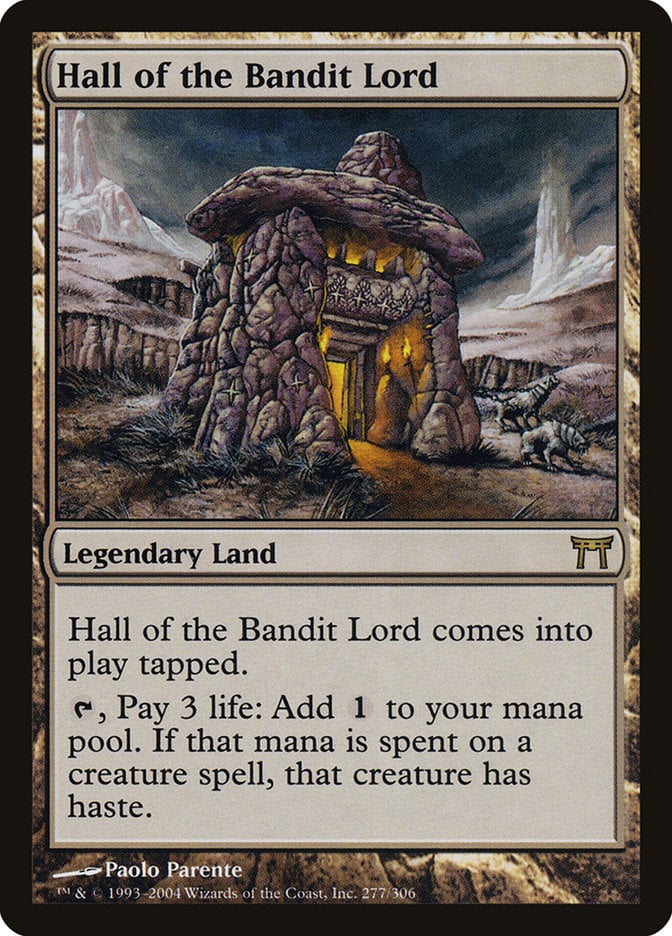
Paying 3 life for 1 mana is a hefty cost, but Hall of the Bandit Lord is worthwhile in a deck with Bloodthirster, Ancient Copper Dragon, and The Master, Multiplied.
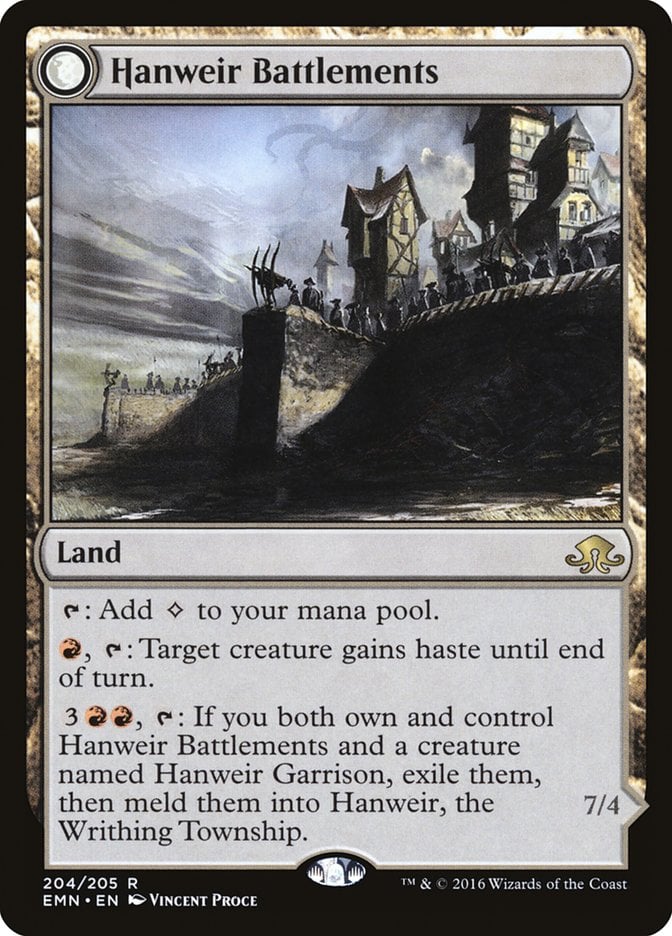
Hanweir Battlements can also provide haste, but it’s primarily here to meld into Hanweir, the Writhing Township.
The rest of the lands fix your mana, emphasizing untapped lands to help curve out.
The Strategy
Curve out and deal damage is the strategy in a nutshell. You want to do everything in your power to get Mishra, Claimed by Gix’s ability to deal 10 or more damage to win the game quickly.
Some combination of interaction, creatures, and card draw is vital in your opening hand. A bit of mana acceleration is also nice, but not as much a priority in this deck as others. The most important aspect of a good keep is a clear path to curving out and filling the board. If possible, you want to play Mishra on turn 3 or 4 alongside a creature that instantly triggers it for quick value you’ll compound on over time.
The speed of tour opponents’ decks impacts how you want to play. If there are Esper colors, board wipes must be on your radar. If it looks like you’re playing against some fast decks, consider prioritizing combos as a way to win instead of using them to help close out a game you can’t win fairly.
Your combos are rather mana-intensive as they revolve around Kiki-Jiki, Mirror Breaker and Helm of the Host. Presenting a lot of early threats helps dilute your opponent’s removal since they’ll want to stem the bleeding by taking out Mishra.
Some of your cards are best held until they have a large impact. Bloodletter of Aclazotz and Roaming Throne are great examples of cards that are high-kill priorities for your opponents. Playing on a turn where you don’t have a hefty Mishra trigger or similar effect to maximize their effects can lead to them underperforming.
Combos and Interactions
Your combos primarily utilize Kiki-Jiki, Mirror Breaker and Helm of the Host to enable infinite attackers or combats. These combos can be notably weak to effects like Cursed Totem and Rampaging Ferocidon that punish going wide, so make sure to remove them. Before we get to the infinites, I want to highlight two value-oriented combos that do a ton of work.
Chandra, Acolyte of Flame + Lagomos, Hand of Hatred
With both these cards in play, use Chandra to make two Elemental tokens. Moving to combat. At the end of the turn, both permanents make you sacrifice the tokens, giving you five deaths. You can activate Lagomos at instant speed before passing the turn to tutor.
This isn’t winning the game, but a free Demonic Tutor each turn certainly helps. This doesn’t work with less than three opponents or The Master, Multiplied, but it’s worth assembling if you can.
Ancient Copper Dragon + Aggravated Assault
You need both cards in play, and Ancient Copper Dragon must be able to attack.
Attack with the Dragon, dealing damage and creating Treasure tokens. Use the Treasure to activate Aggravated Assault, getting an extra combat and attacking with the Dragon again.
This combo wins most of the time. It’s not truly infinite since you can always strike out with low d20 rolls, but you’ll get plenty of combats to try and win the game with and a rich horde of Treasure if your opponent interrupts it.
Now, for the infinites:
Kiki-Jiki, Mirror Breaker + Combat Celebrant
You need both creatures in play. Activate Kiki-Jiki, making a copy of Celebrant. Attack and exert the Celebrant, untapping Kiki-Jiki and your other creatures. Before the end of combat, activate Kiki-Jiki to make a fresh copy of Celebrant for infinite combats, each coming with an attacking 4/1.
Helm of the Host + Combat Celebrant/Bloodthirster
For this combo, you need Helm and one of the two creatures in play. Attach Helm to your creature. For Combat Celebrant, exert the token to get an extra combat that makes a new token. Bloodthirster creates exponential infinite tokens and combats; one Bloodthirster gives you three combats and three additional Bloodthirsters that each produce three combats and so on.
The Reaver Cleaver + Aggravated Assault
You need both of the above cards in play. Additionally, you need a creature that can carry The Reaver Cleaver and deal at least 5 damage.
Equip your creature with the Cleaver and attack, dealing at least 5 damage. This triggers the Cleaver, producing five Treasures. Use these to activate Aggravated Assault, getting an additional combat. Repeat for infinite combats and infinite damage. This also generates infinite Treasure if you make more than five Treasure tokens.
These combos win on the spot. The last one is tricky but not impossible to pull off. Notably, even if you have an opponent who can’t take damage because of a card like Solitary Confinement, these combos all trigger Mishra, Claimed by Gix for an infinitely large number or an infinite number of times, letting you skirt some amount of protection. This also allows you to throw all the creatures away from the player with Ghostly Prison and similar effects to drain them.
Rule 0 Violations Check
This is a primarily fair deck. The combos are backups, but they’re plentiful and powerful. Most of them only require two cards, and this deck has plenty of tutors to set them up. This is solidly a mid-powered deck, though the power level and combo potential could easily drop by removing Kiki-Jiki, Mirror Breaker and Helm of the Host for other value cards that work with Mishra.
Budget Options
Let’s look at a few ways to drop the deck’s price. There’s a lot of money in the mana base, so cutting cards like Blood Crypt, Bloodstained Mire, and the channel lands in favor of basics or tapped lands does a lot to slash the price.
Orcish Bowmasters does so much work but does so in enough formats to cost a fortune. Any cheap value creature like Subira, Tulzidi Caravanner.
Dark Tutelage provides the same card advantage as Dark Confidant at a fraction of the price.
Purphoros, God of the Forge destroys your opponents. Impact Tremors can carry its burden.
Fury can get swapped for another creature that helps clear the board and works with Kiki-Jiki, like Flametongue Kavu.
Ancient Copper Dragon boosts an astounding price and could be any big attacker like Inferno Titan or Grave Titan.
The Reaver Cleaver is a cool card in all aspects, but the humble Diamond Pick-Axe helps in a pinch.
Demonic Tutor and Vampiric Tutor can be cut in favor of weaker tutors like Wishclaw Talisman and Diabolic Tutor or raw card draw like Sign in Blood and Wrenn's Resolve.
Other Builds
There are a few other ways you could take Mishra, Claimed by Gix. One would be to make a more lore-faithful version that utilizes your graveyard and artifacts. Cards like Trash for Treasure and Daretti, Scrap Savant help excavate devastating secrets like Cityscape Leveler and Portal to Phyrexia.
You can also really turn the power level up or down. Ditching the combos and some cards like Orcish Bowmasters would help make this much friendlier for casual tables. This deck could also support a bunch of fast mana to help get to the board faster and deepen the combo options with cards like Dockside Extortionist to compete at high-powered tables.
Commanding Conclusion
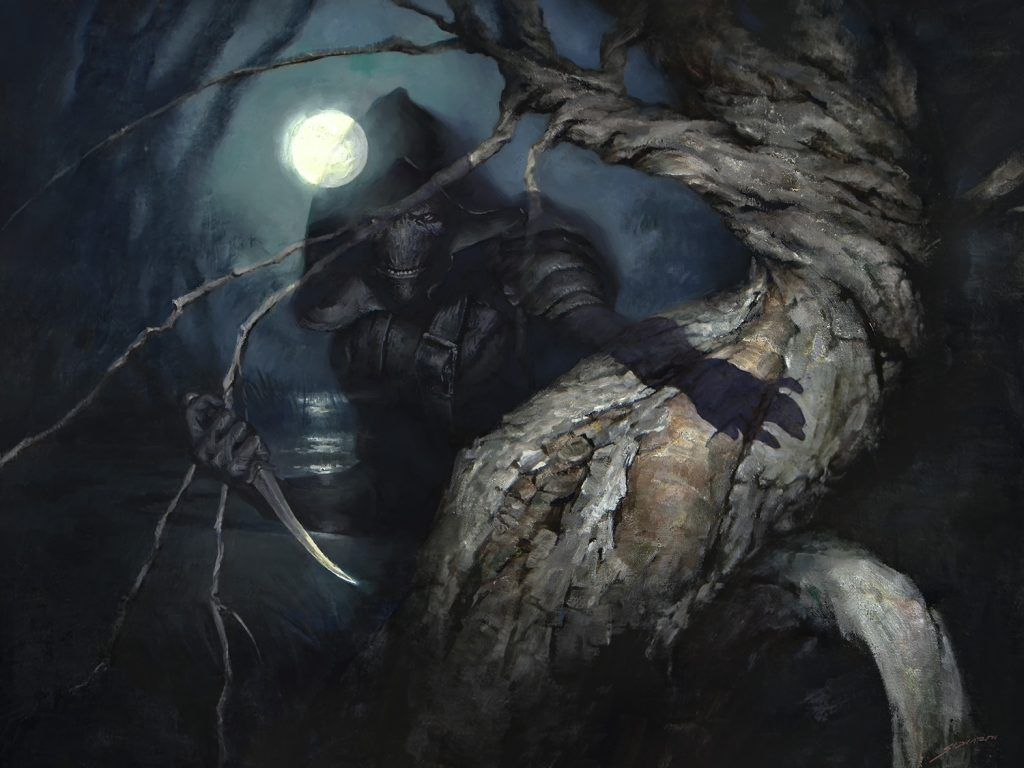
Dauthi Voidwalker | Illustration by Sidharth Chaturvedi
The Brothers’ War offered a glimpse at an iconic piece of Magic lore that had only been referenced on cards before. Digging into the lore lets you see iconic characters and imagined with modern design years after their inception.
Mishra, Claimed by Gix does a fantastic job displaying the younger brother, so desperate for power he fell under the influences of one of the greatest evils known to the multiverse and worked to spread it. What’s your favorite character from Magic’s lore? Do you build your decks to work with the lore of a character or the card’s text? Let me know in the comments or on the Draftsim Discord!
Stay safe, and stay compleat!
Follow Draftsim for awesome articles and set updates: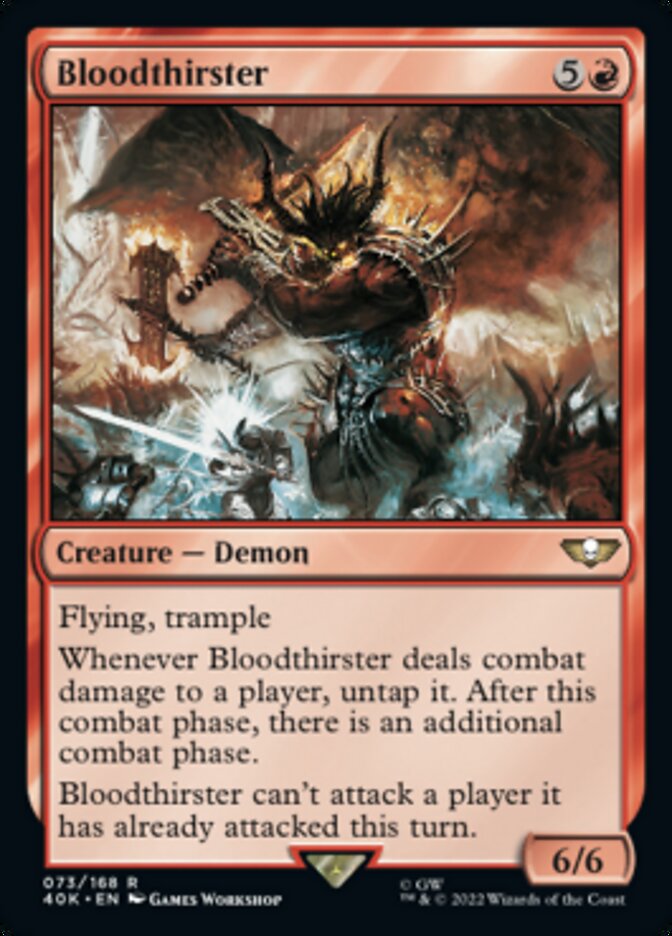
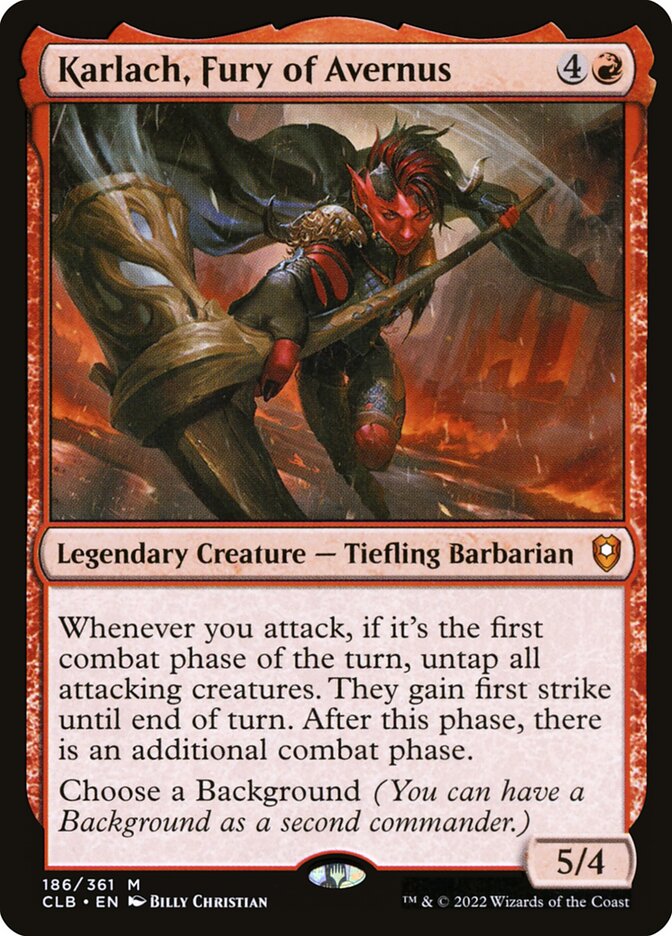
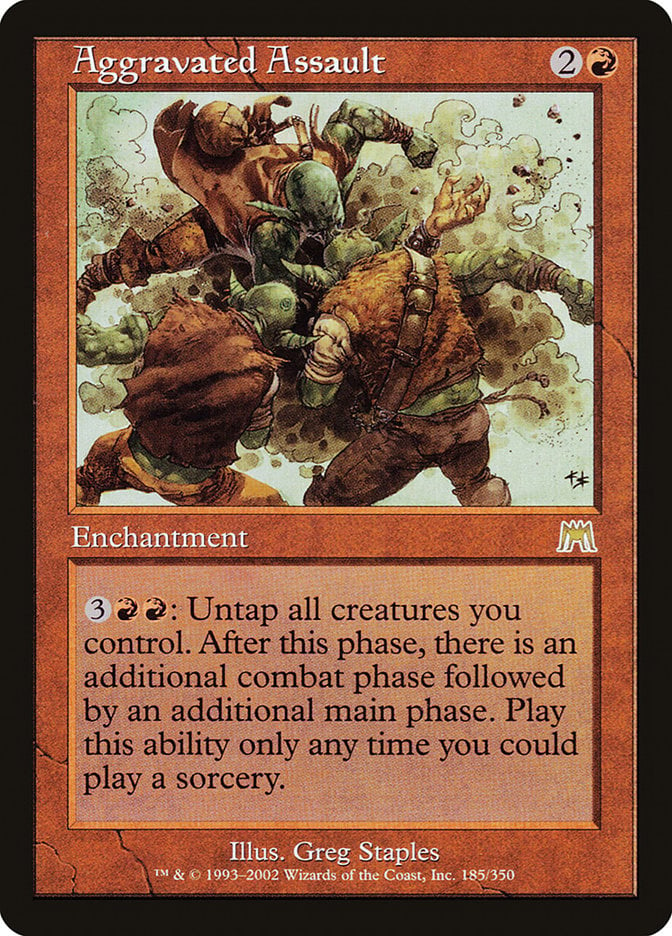

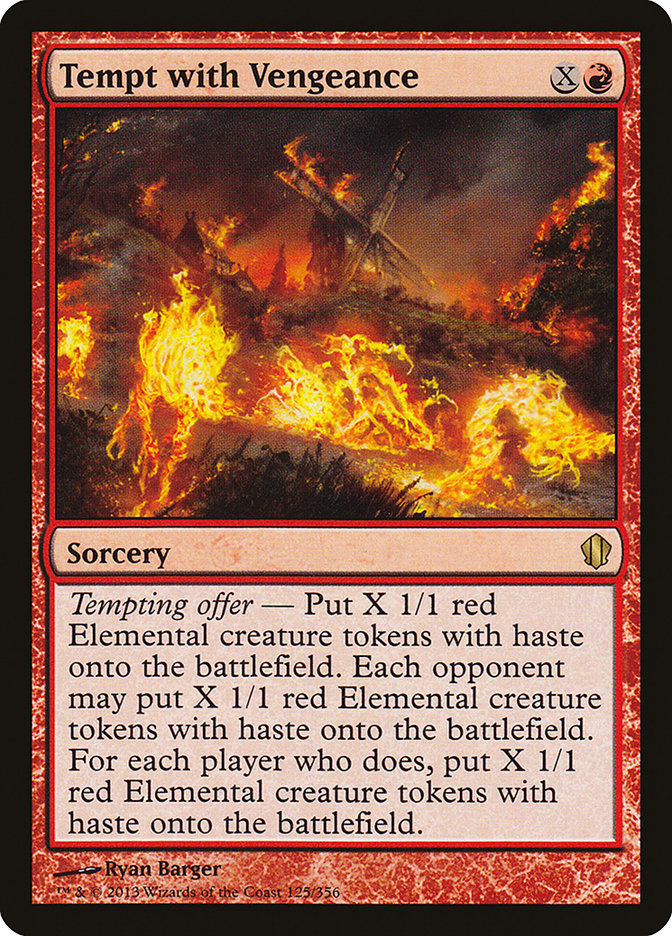
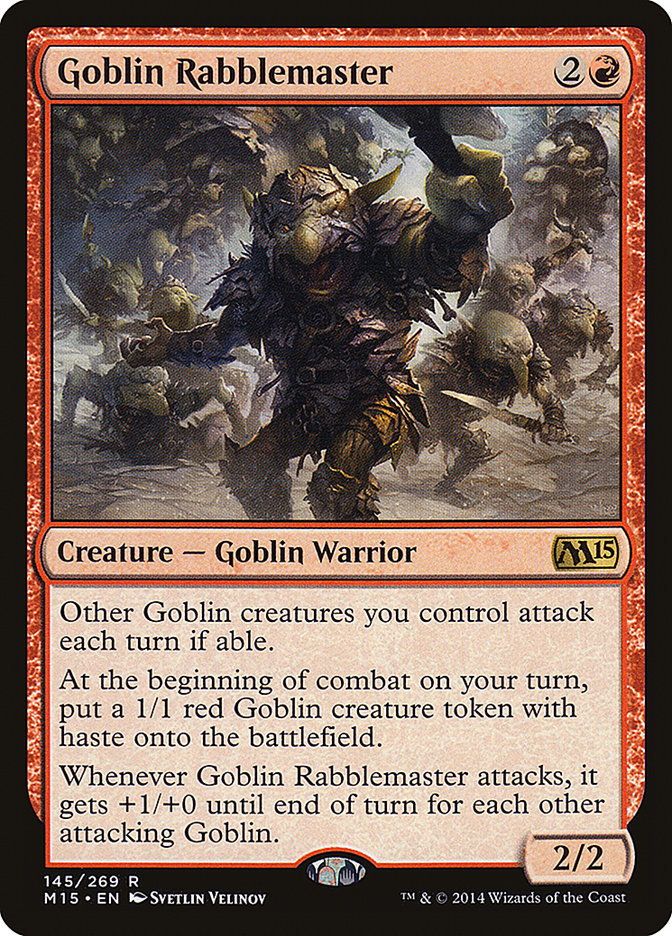
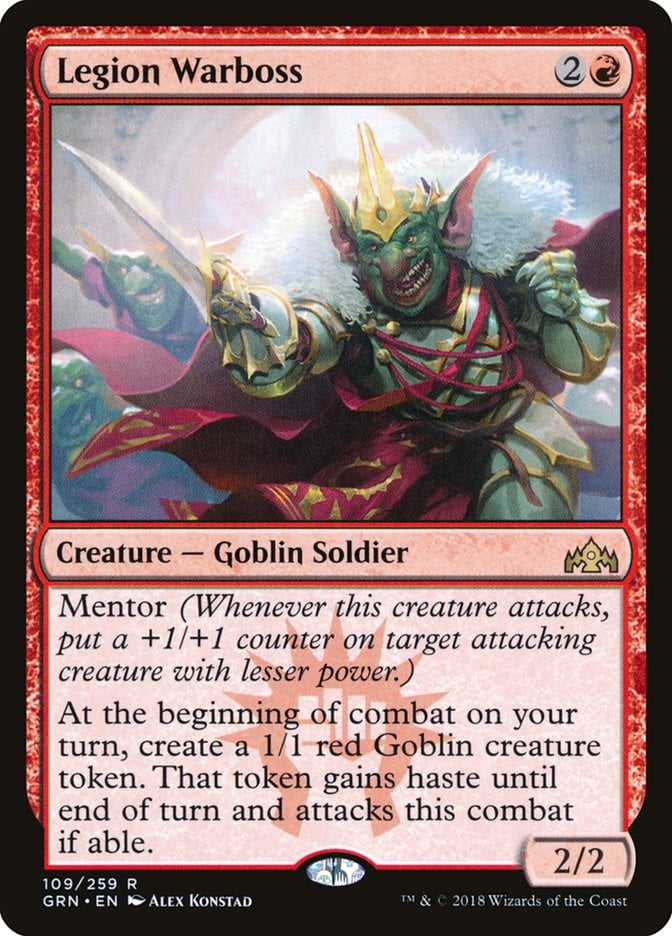
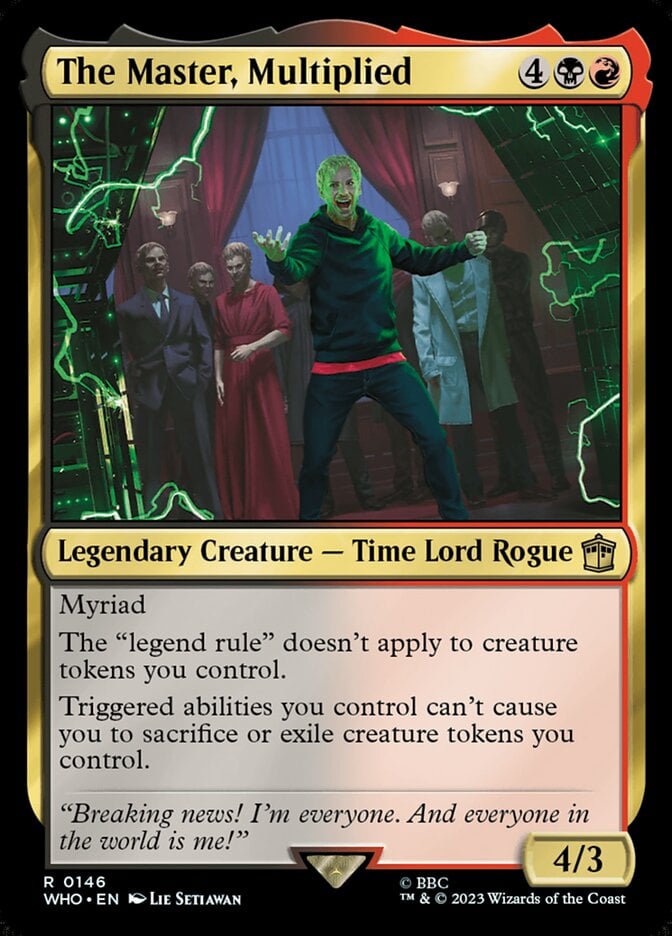
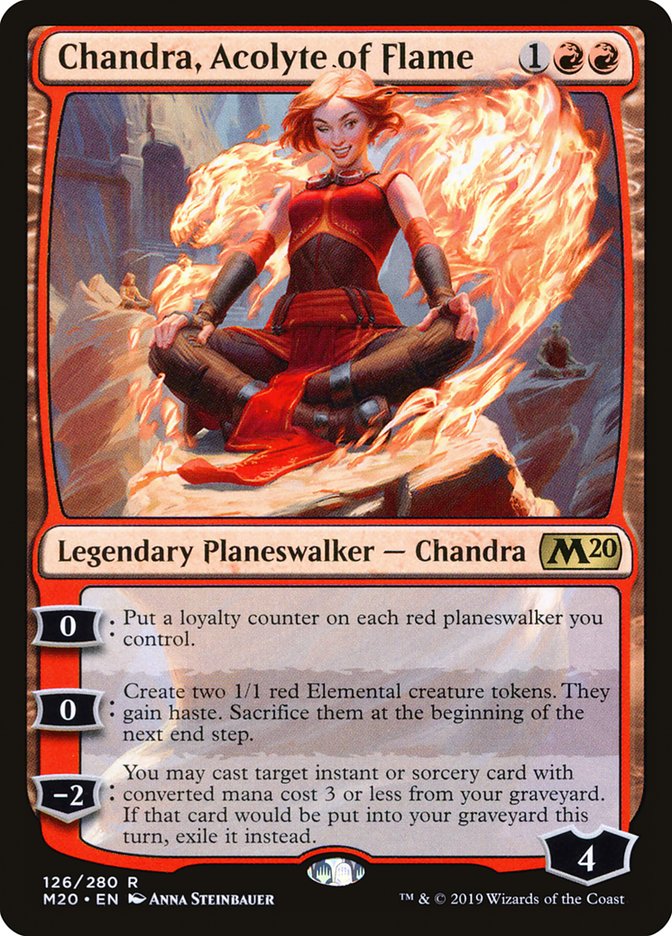
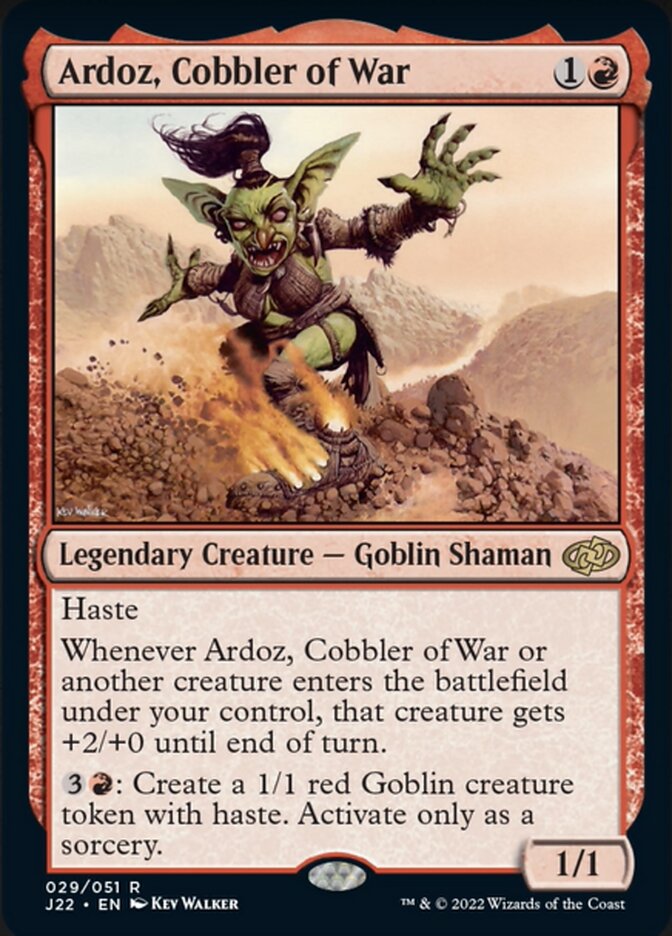
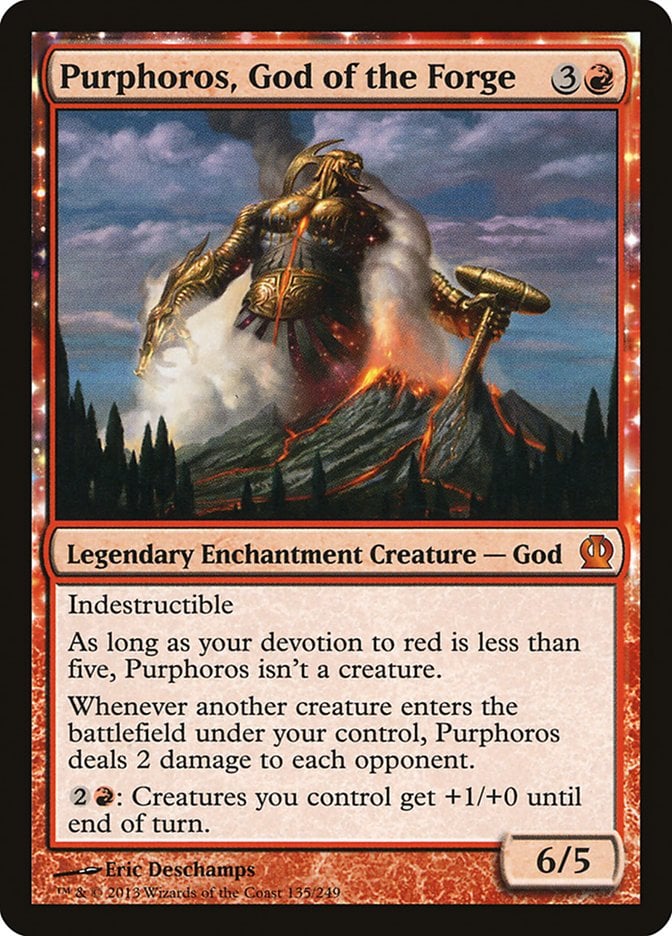
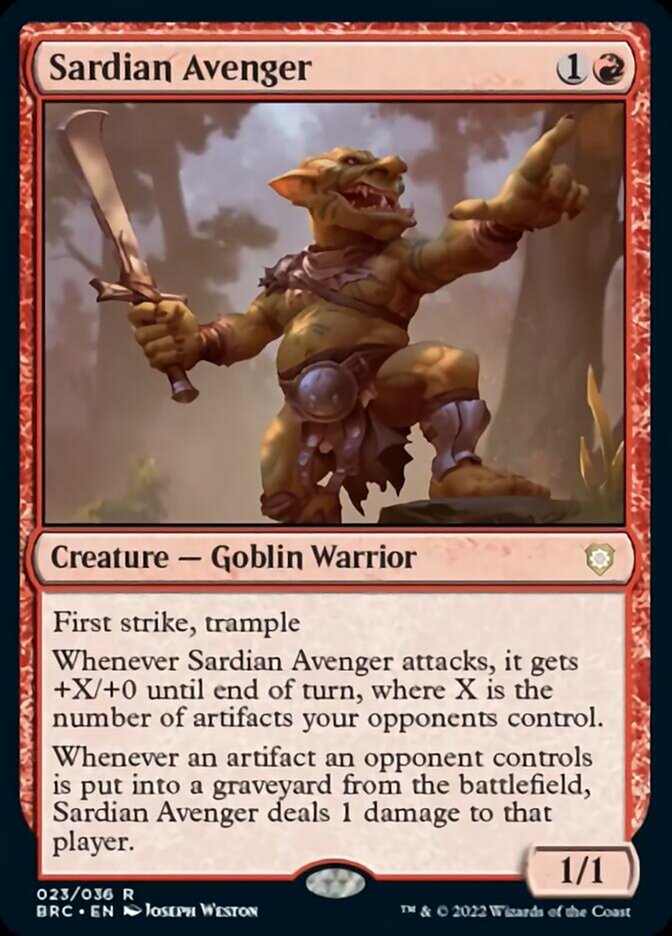

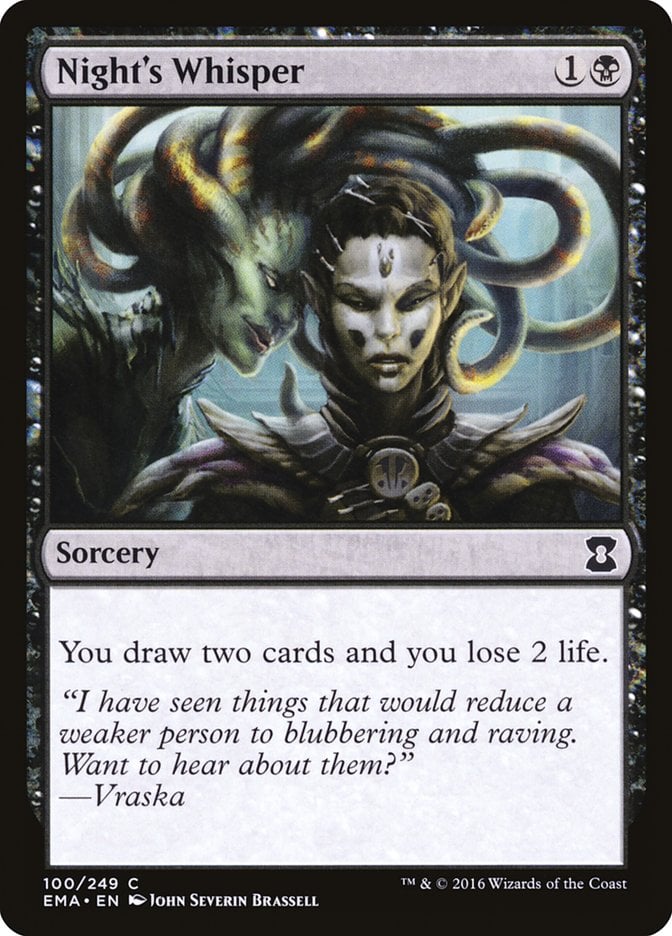


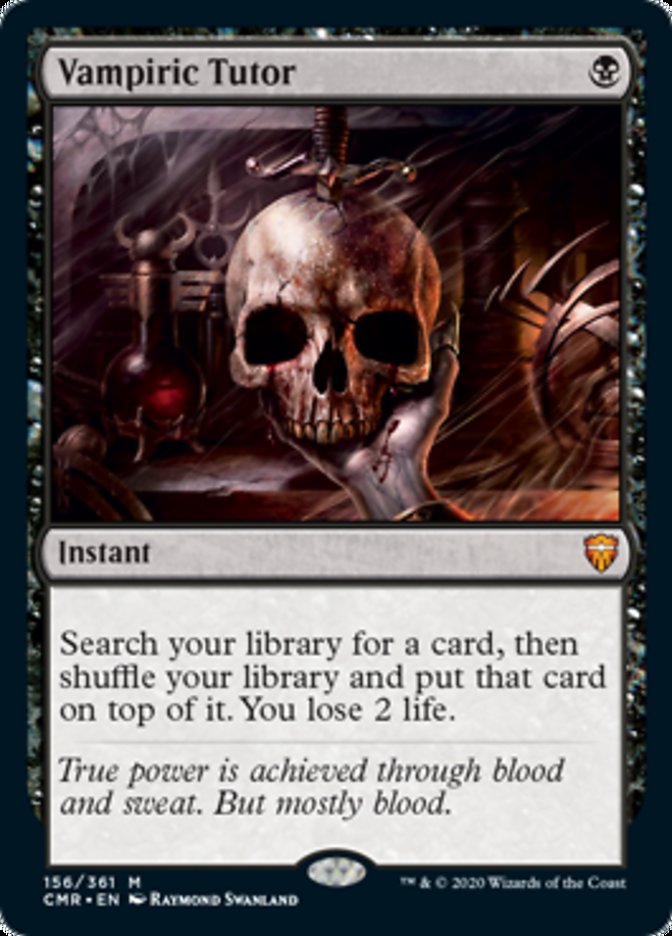
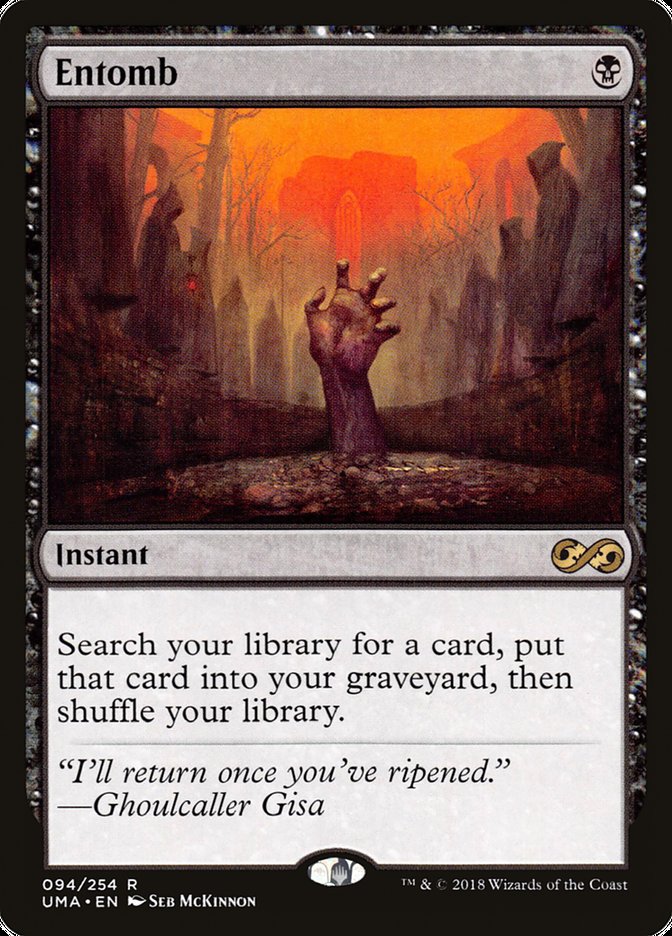
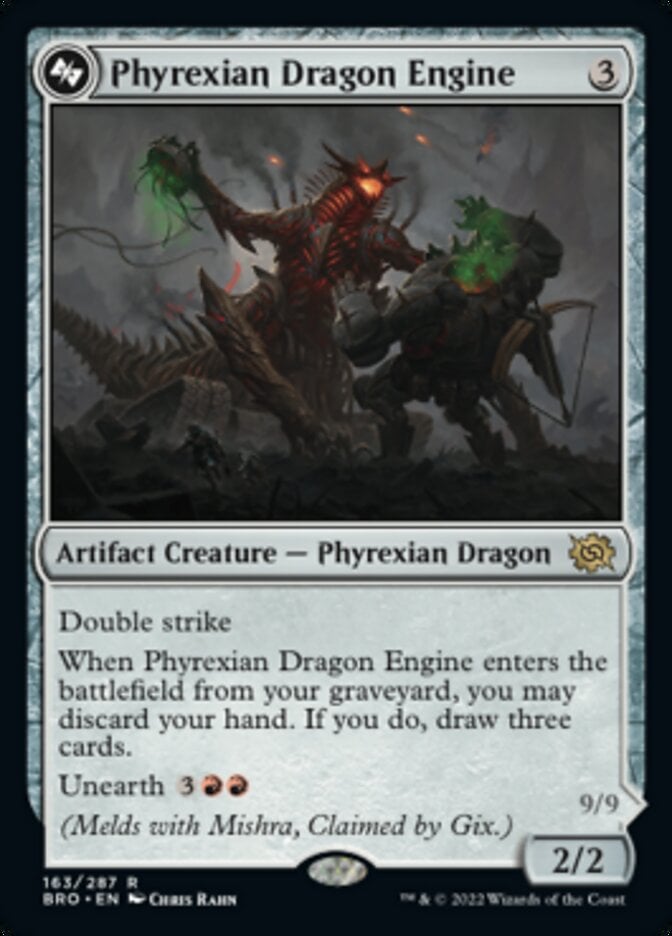
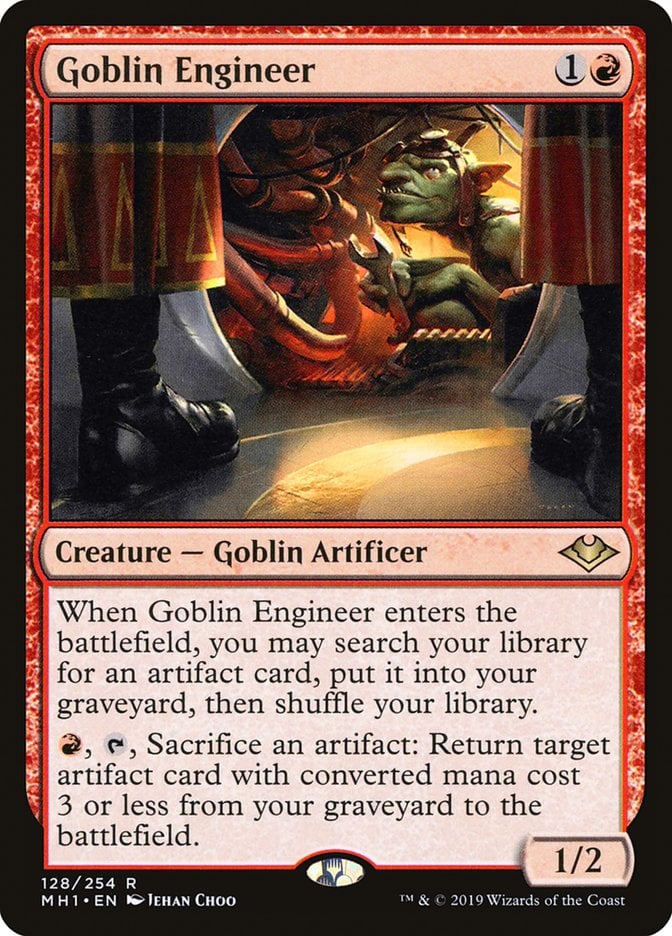

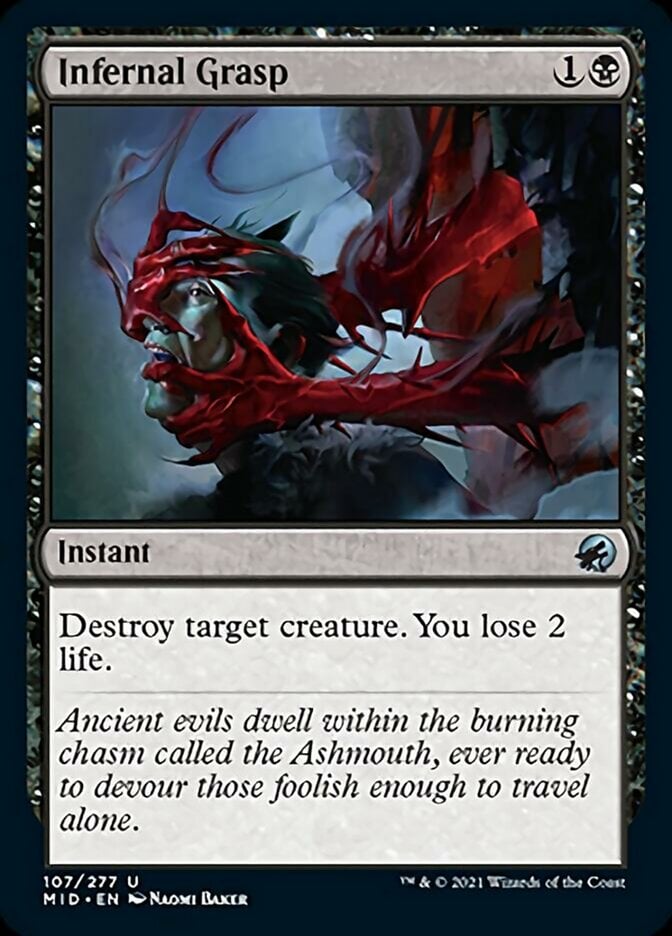
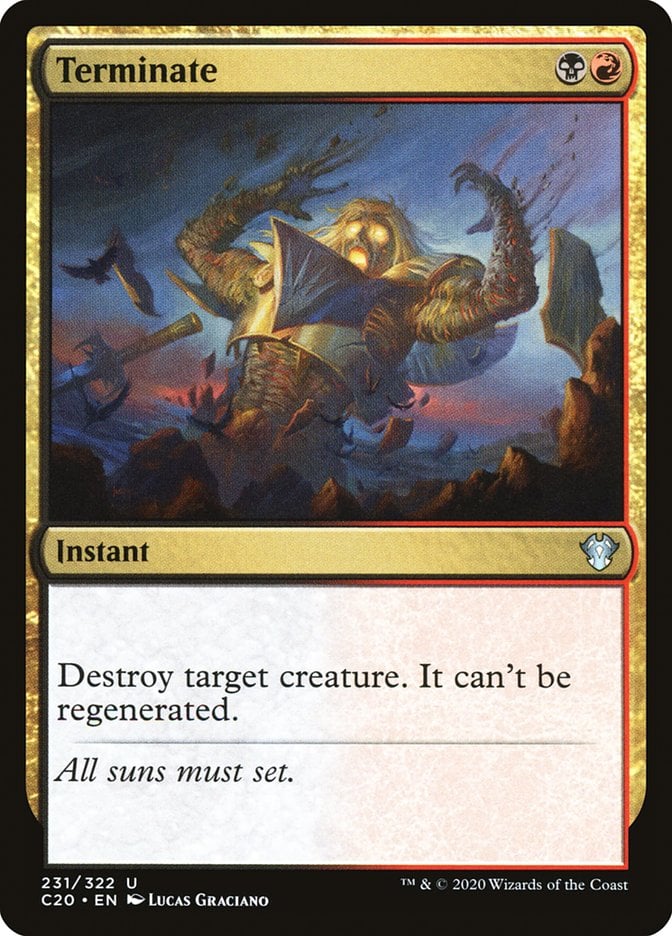
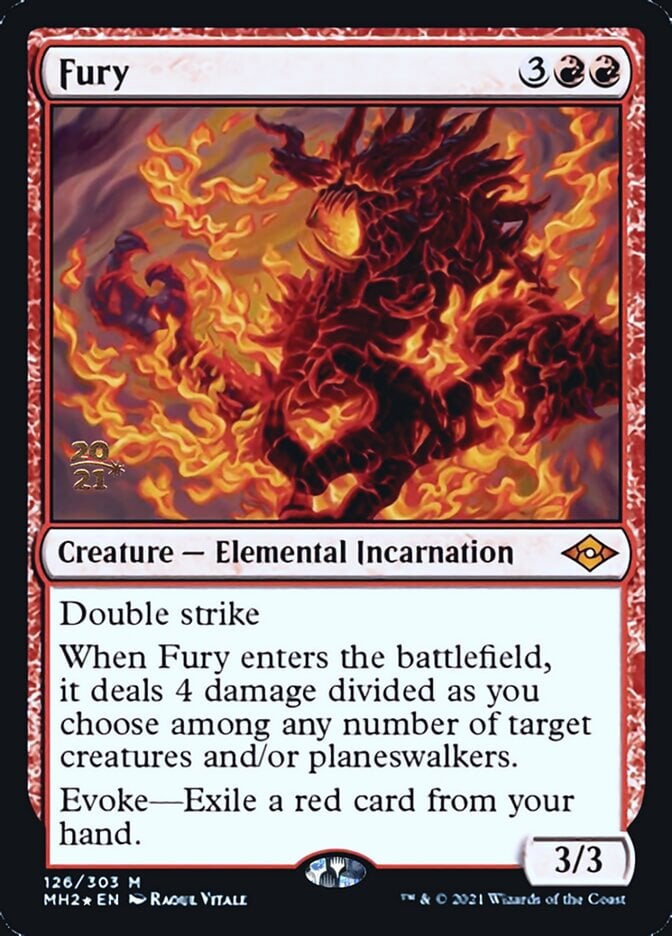
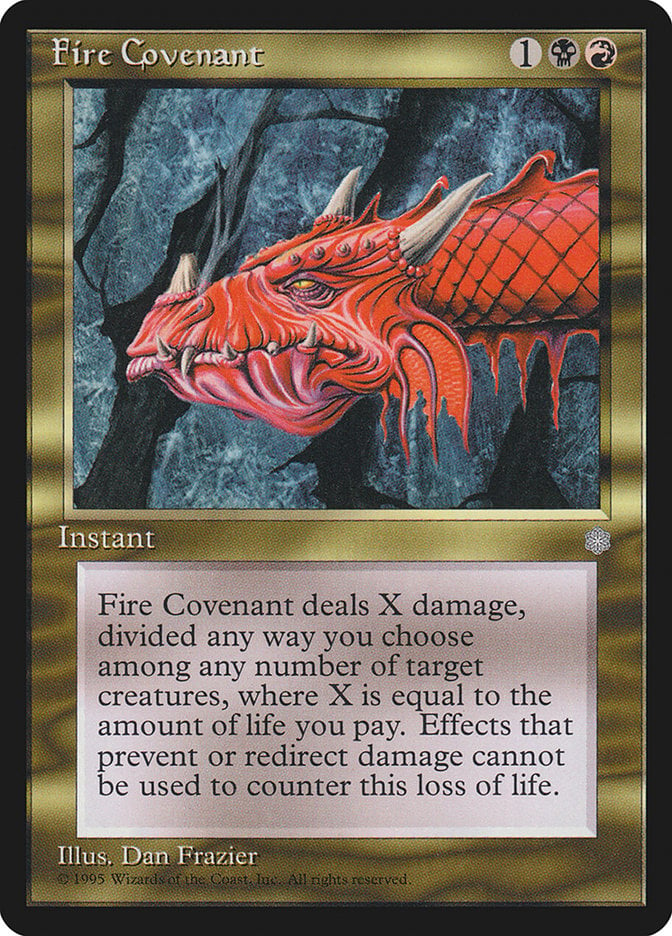
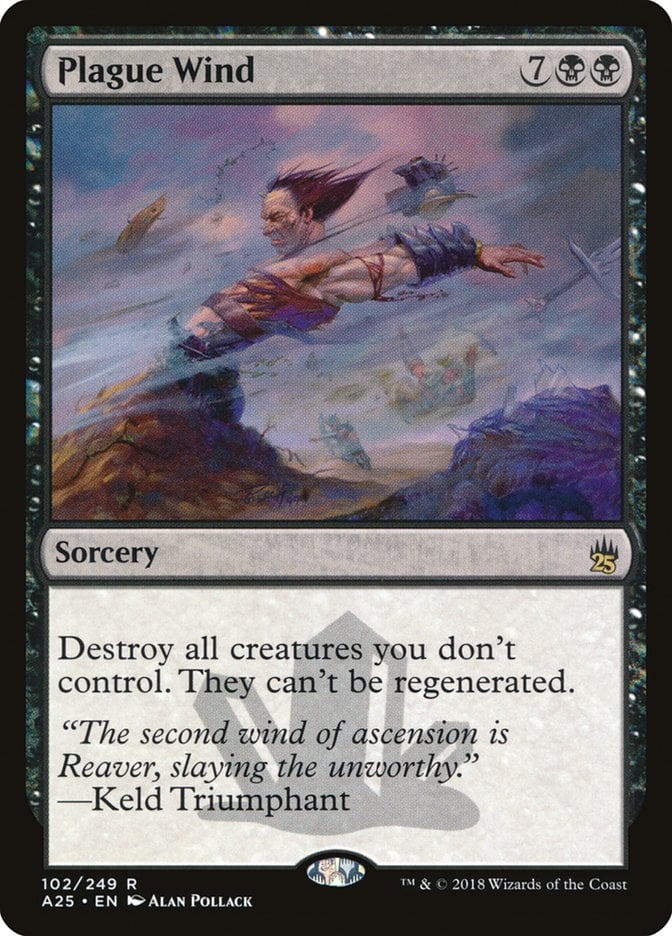


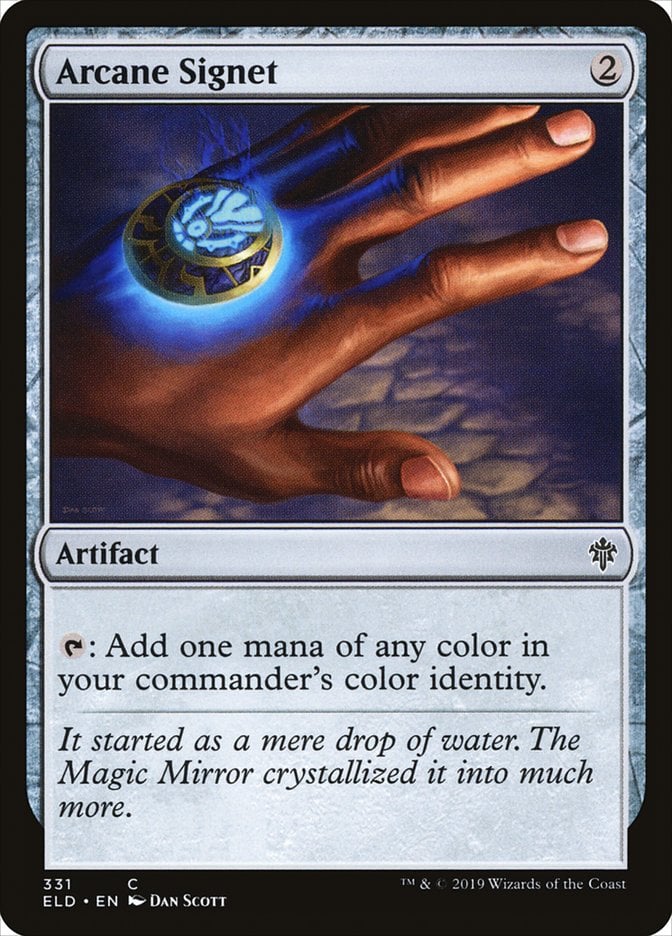
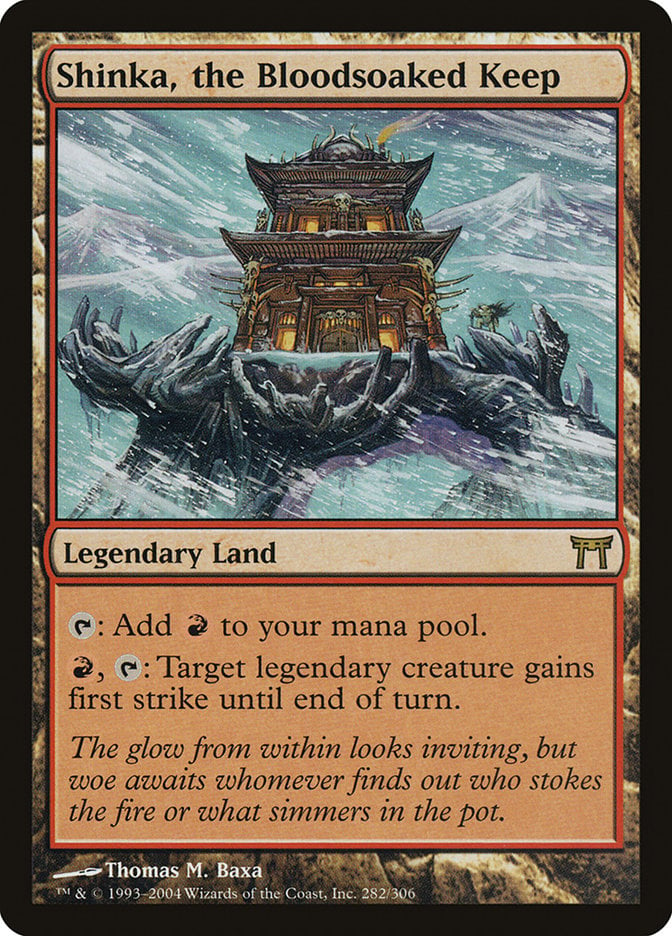
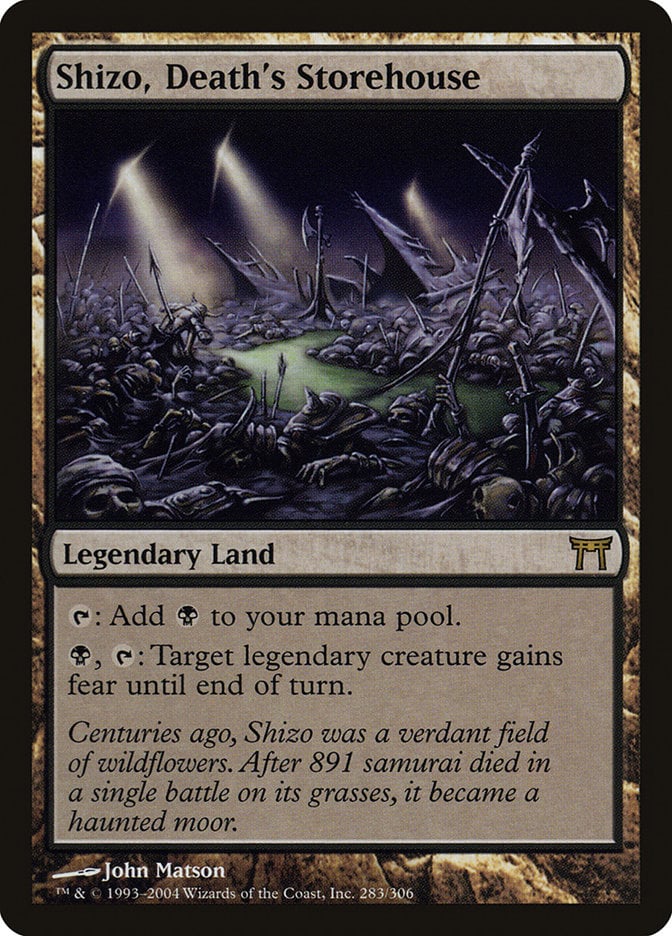
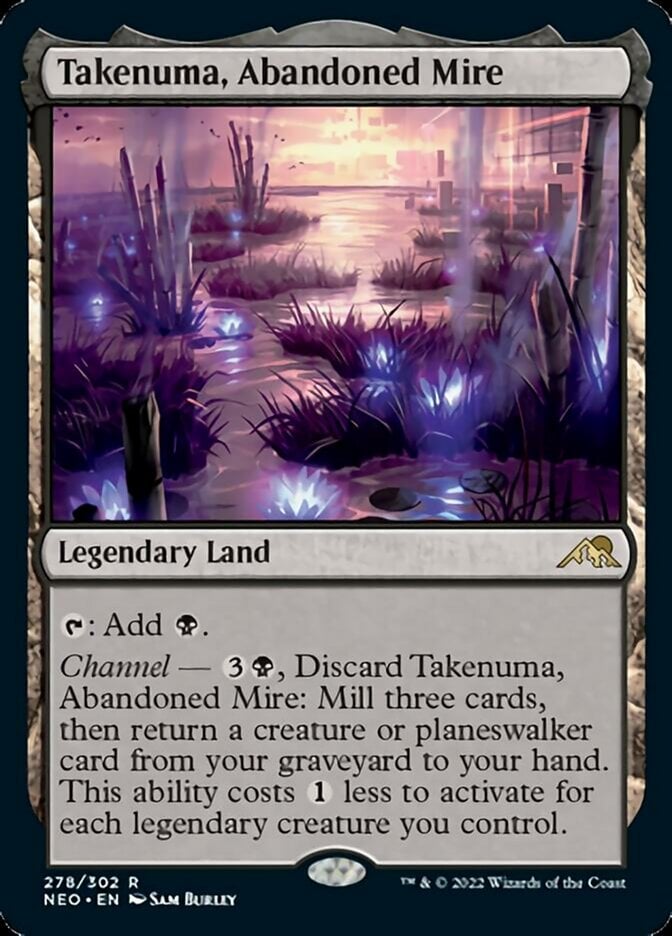
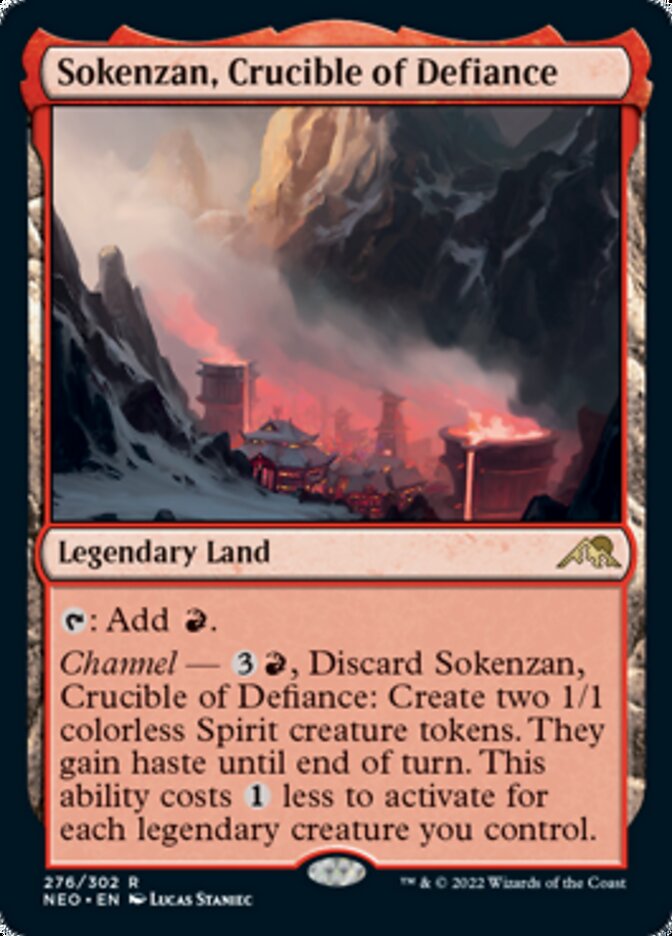
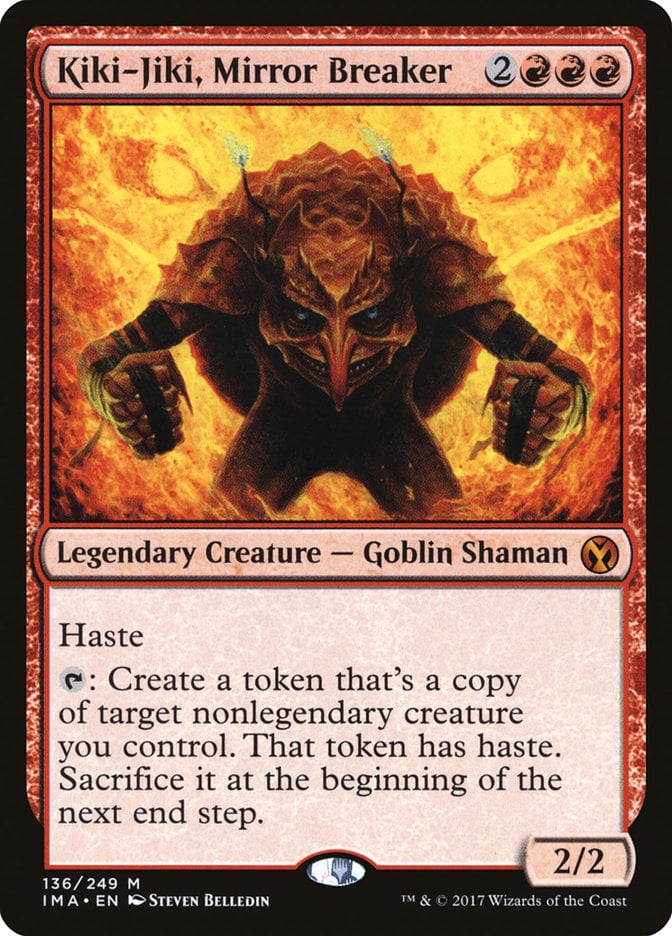

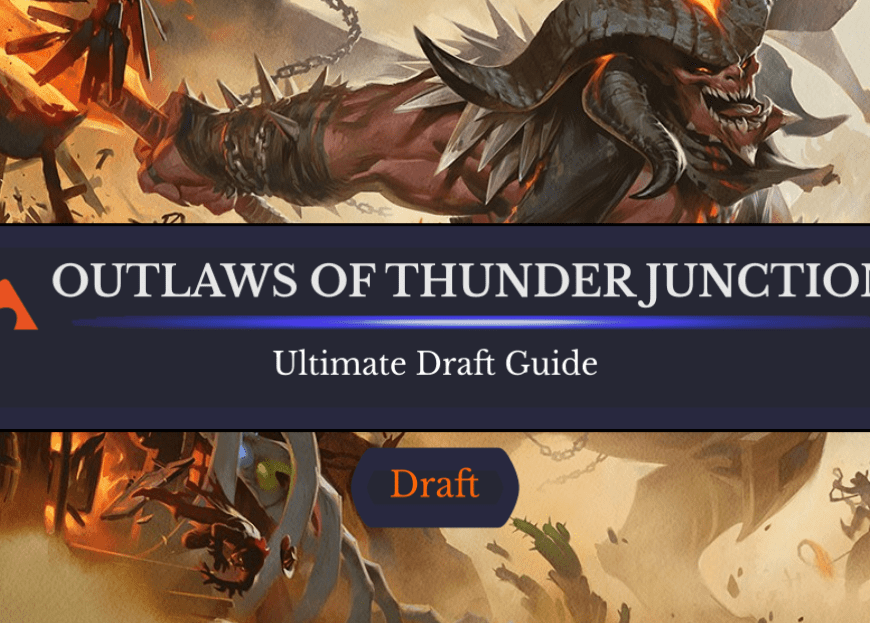
2 Comments
Hmm. Goblin engineer can’t find back helm if it was countered
Lagomas can’t create 3 elementals if I am not wrong.
Thanks for the input Robbie, I fixed up what you pointed out 🙂
Add Comment